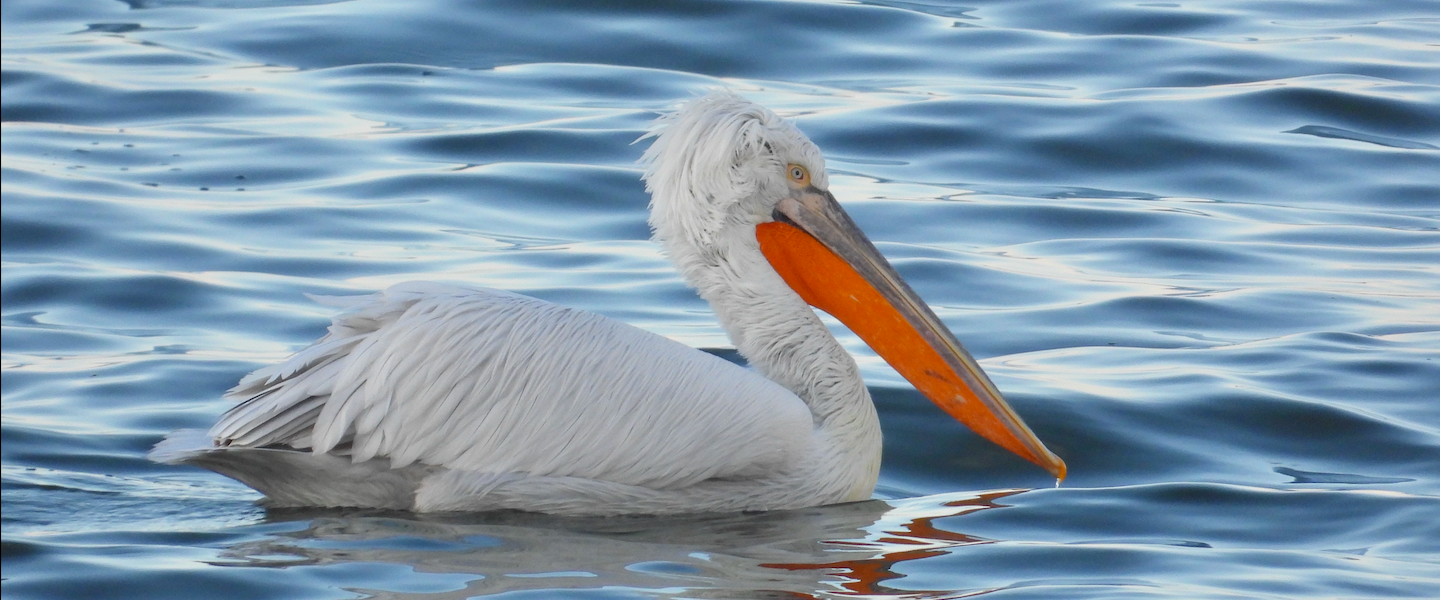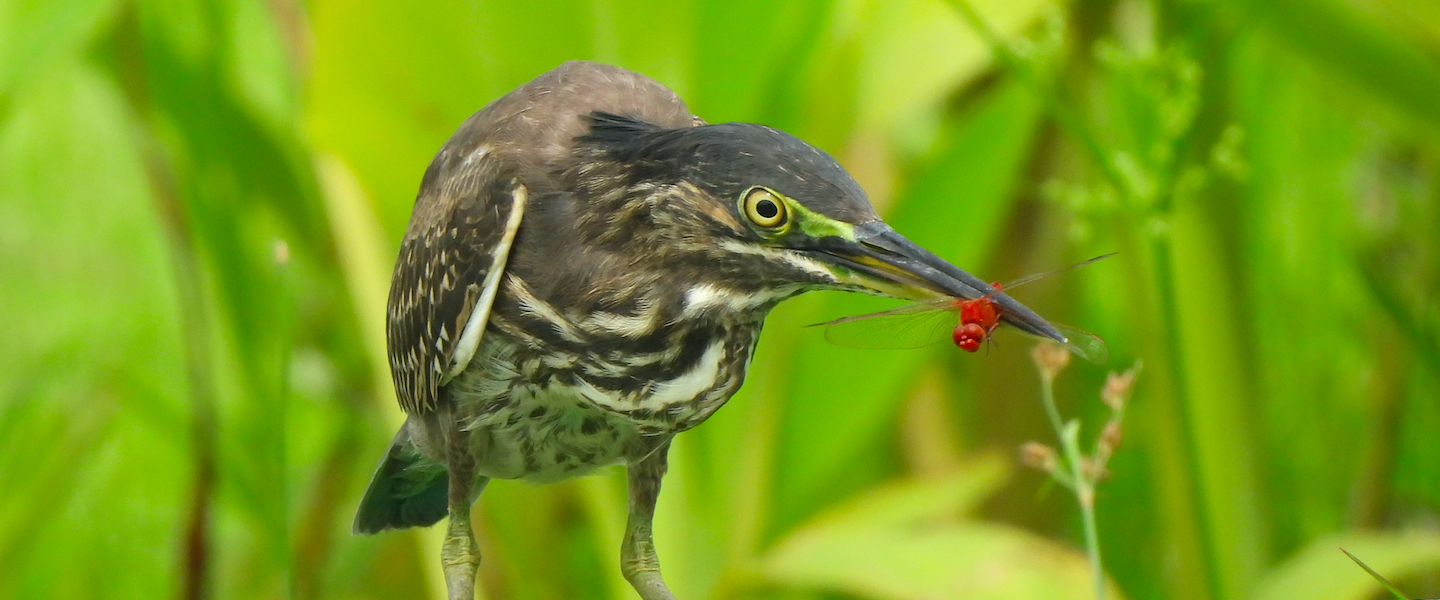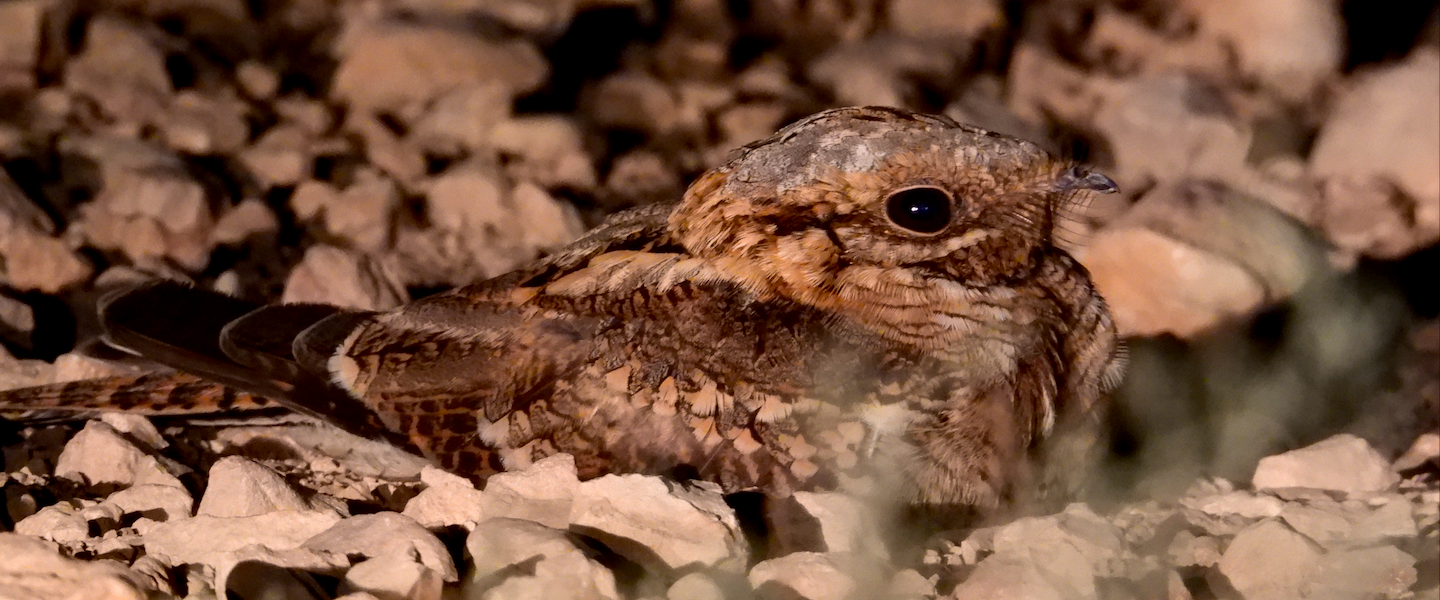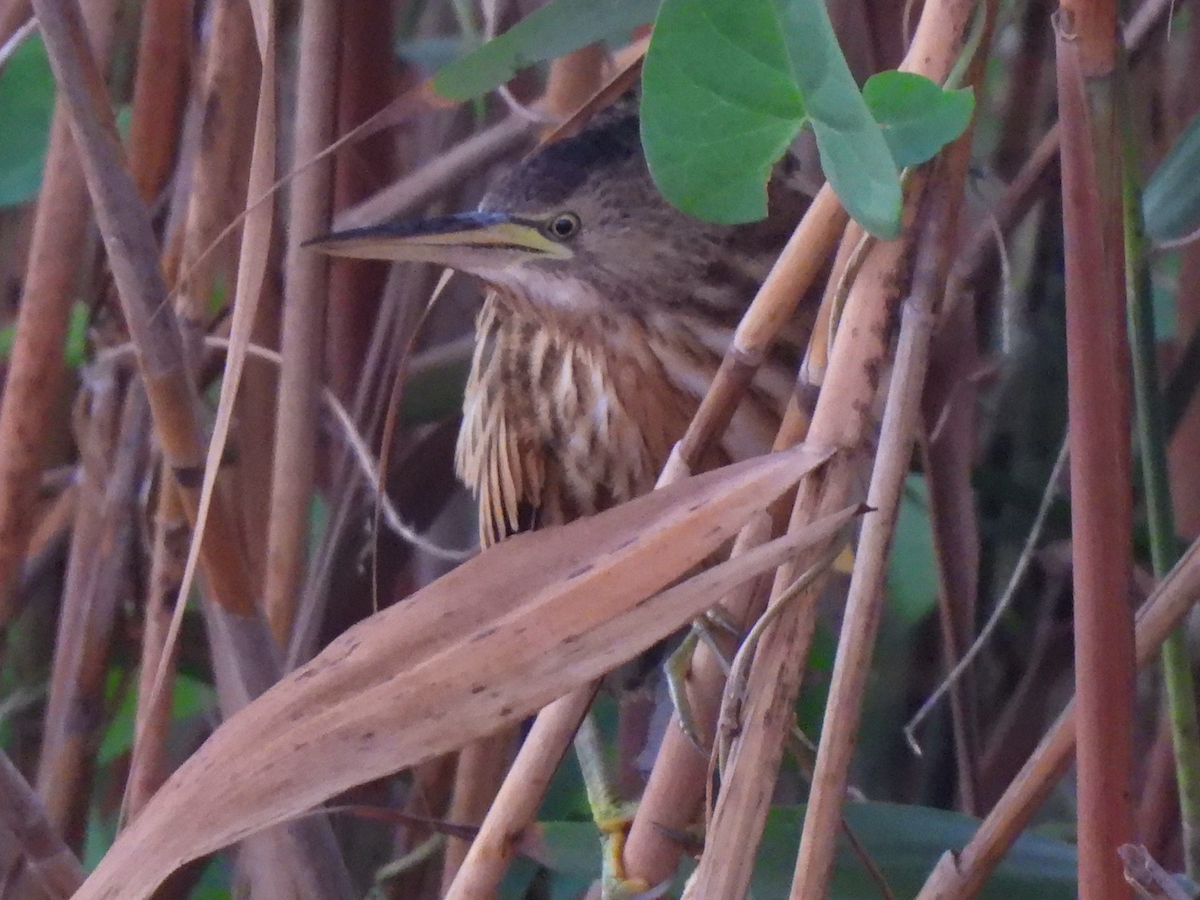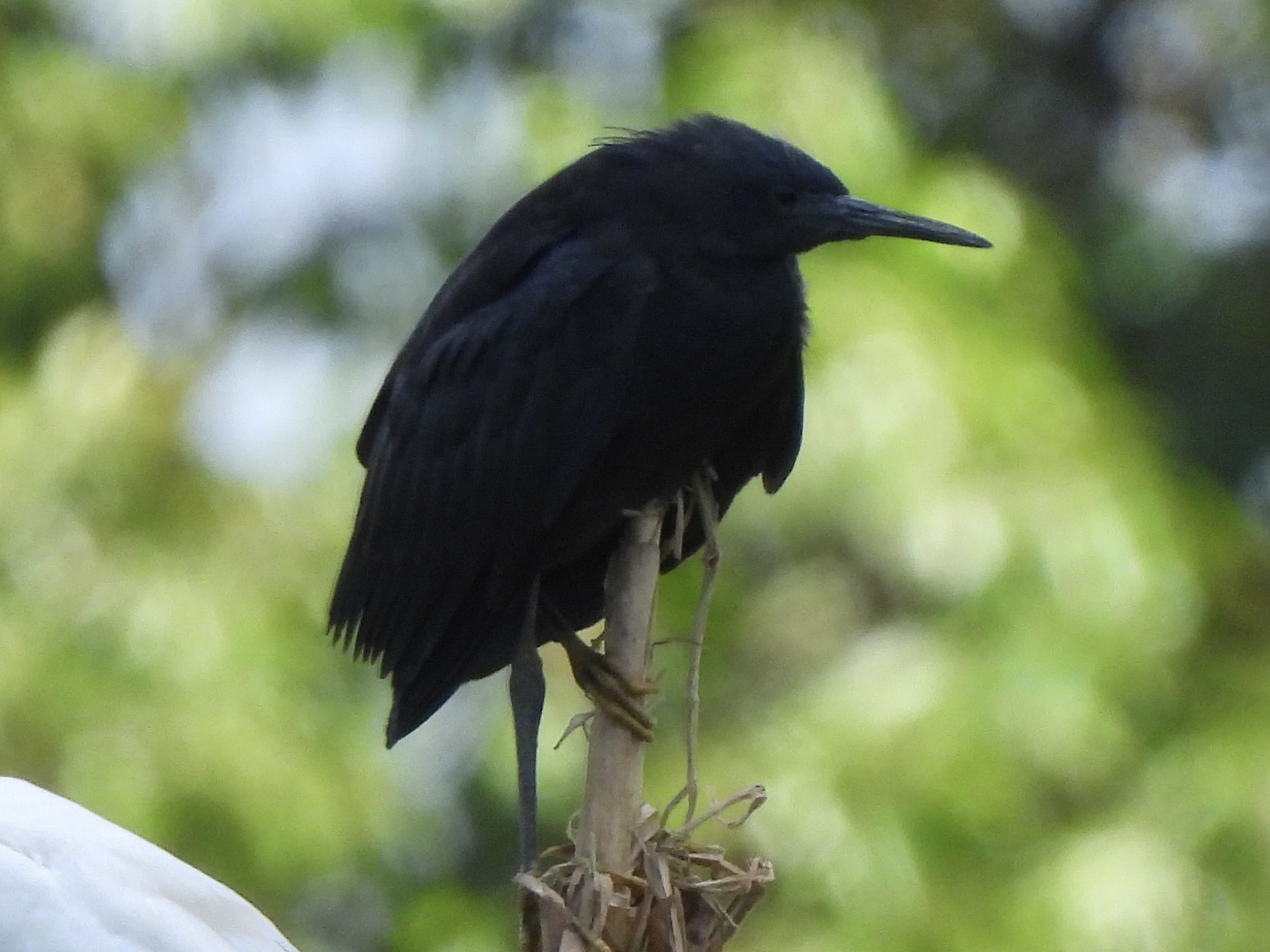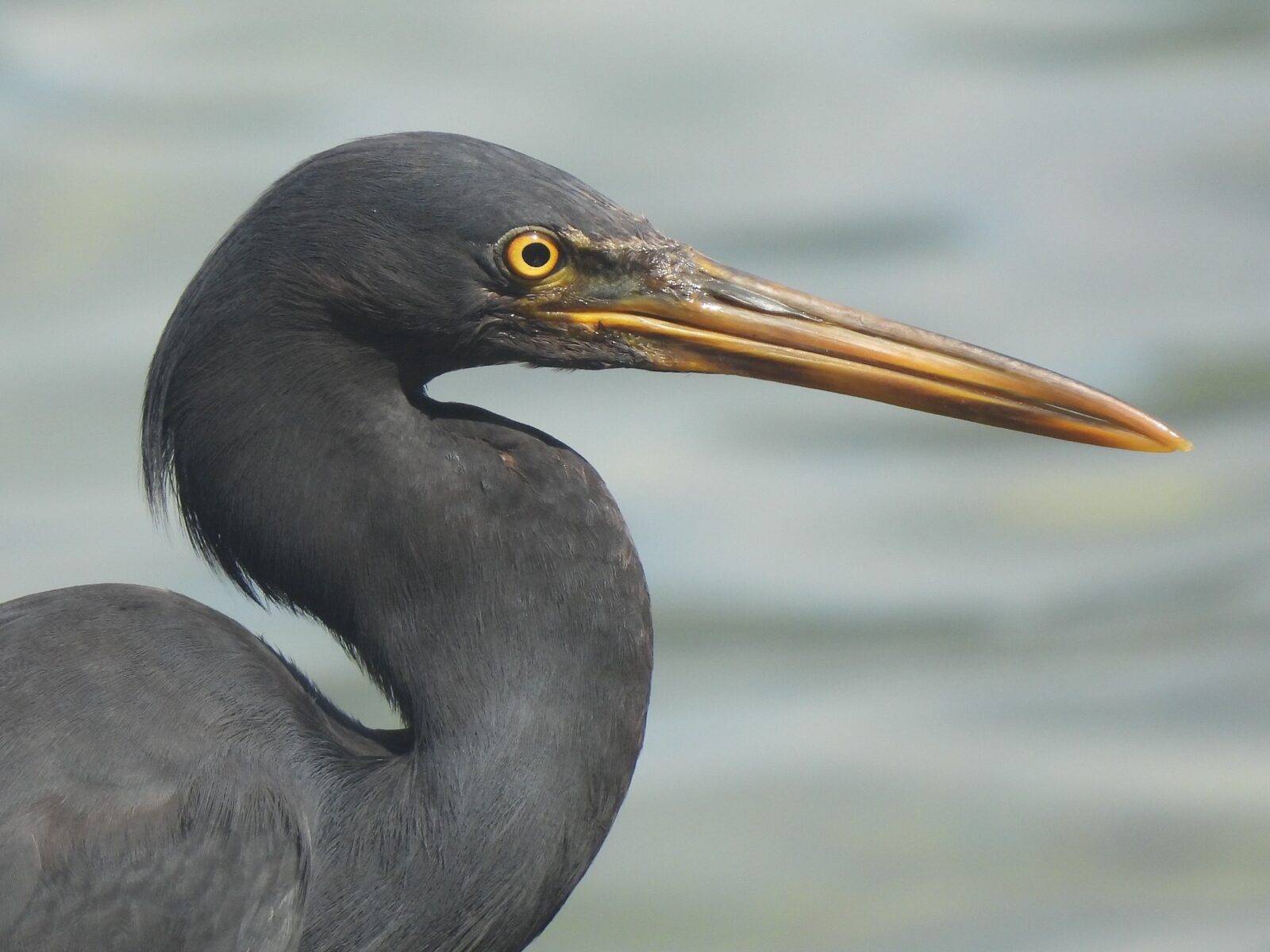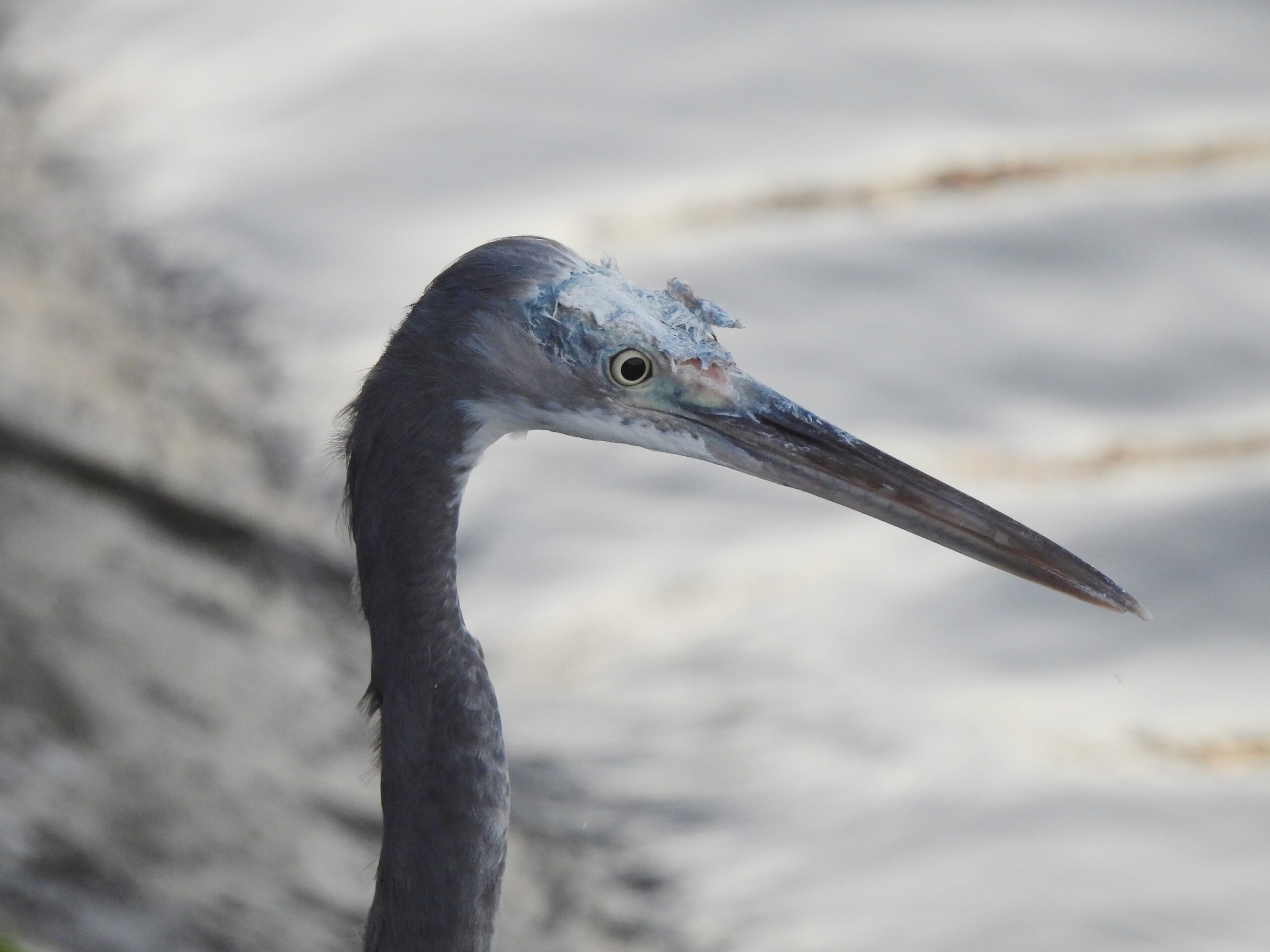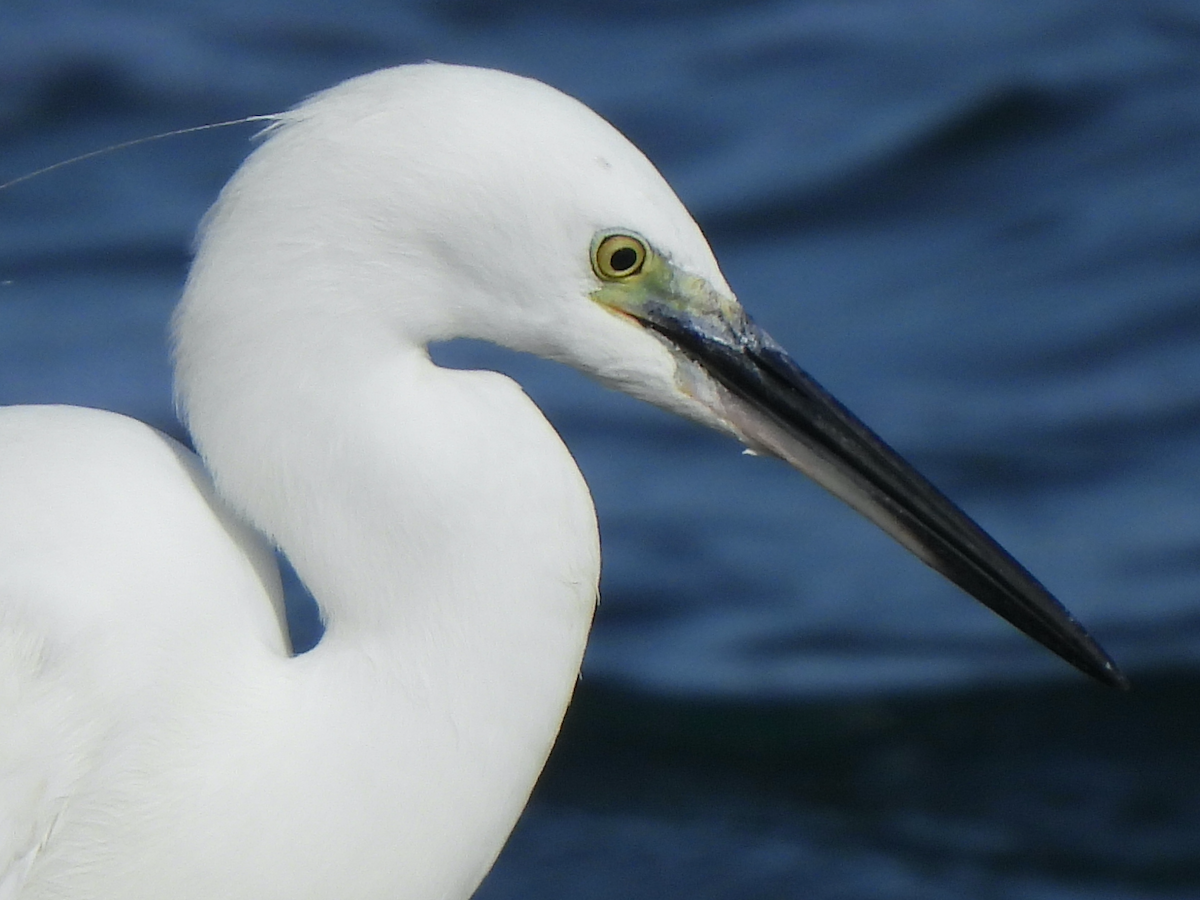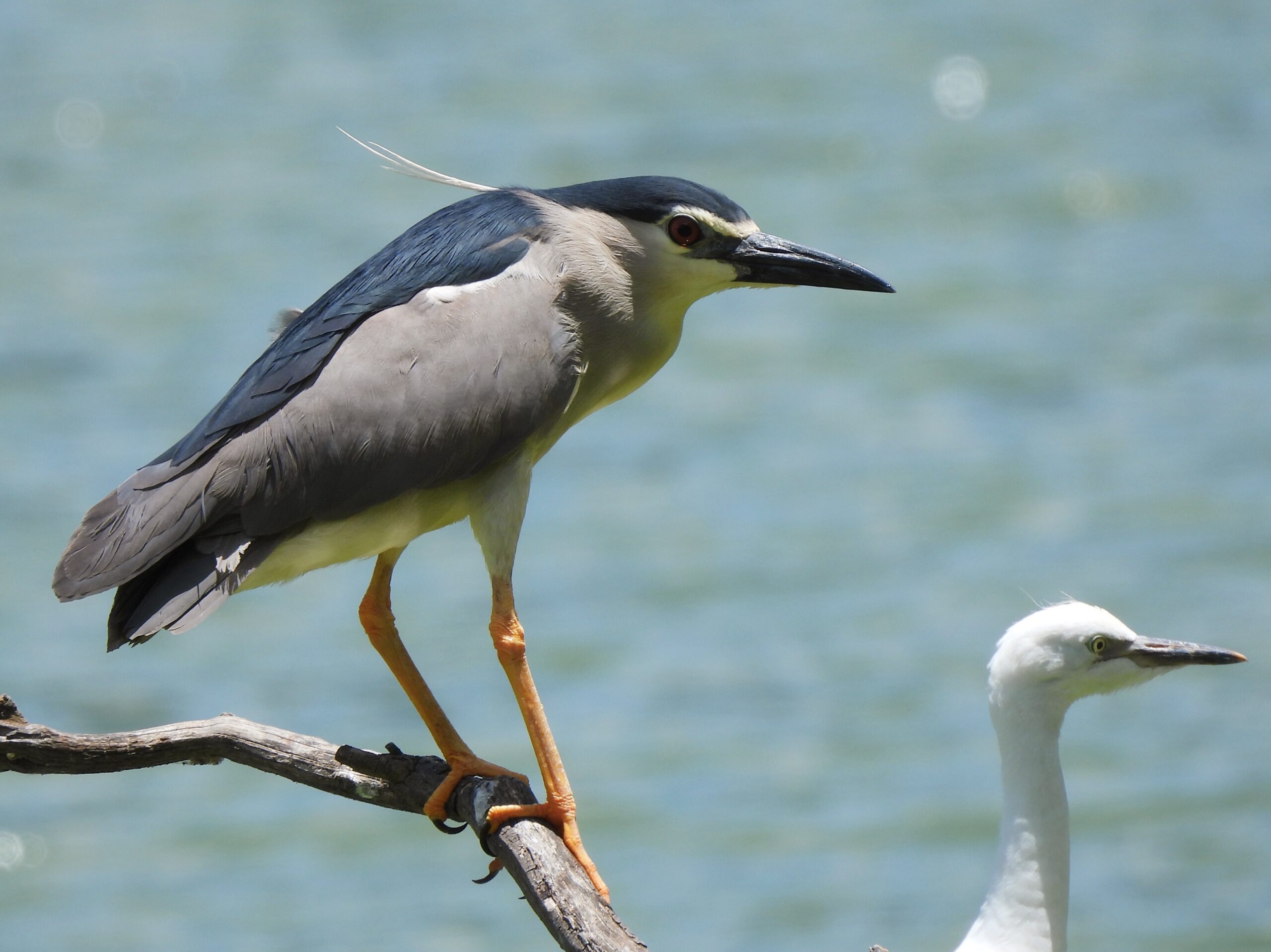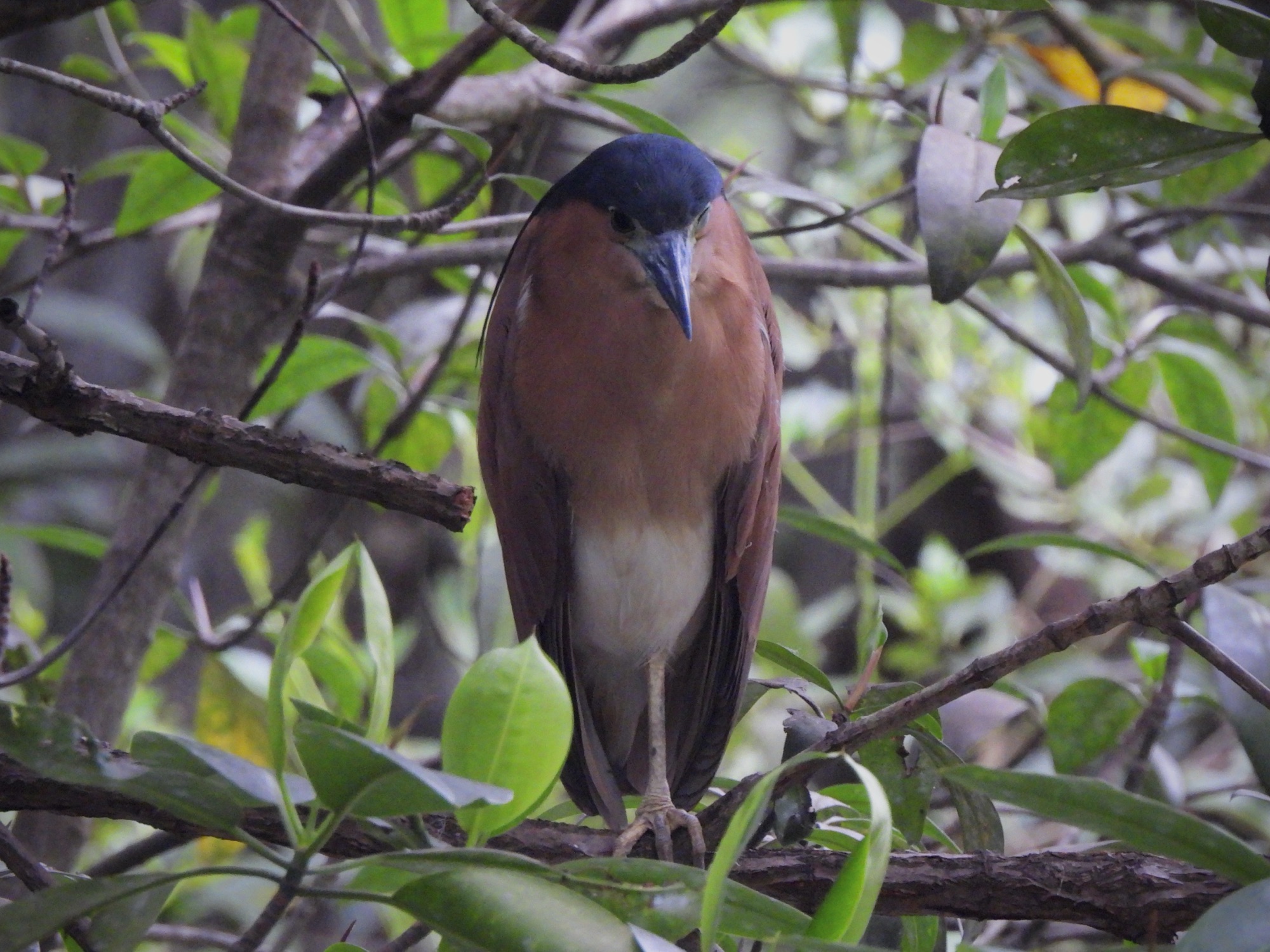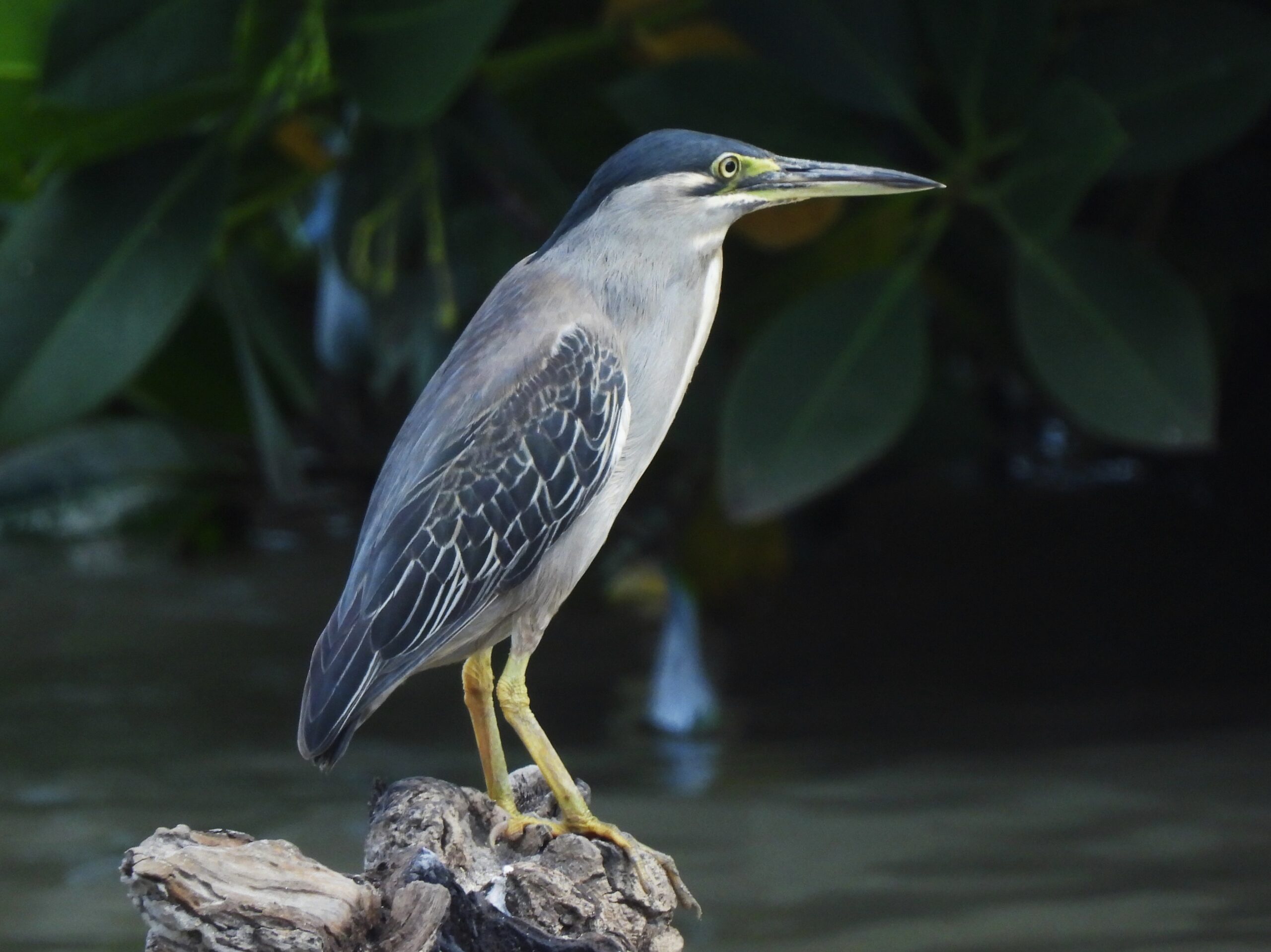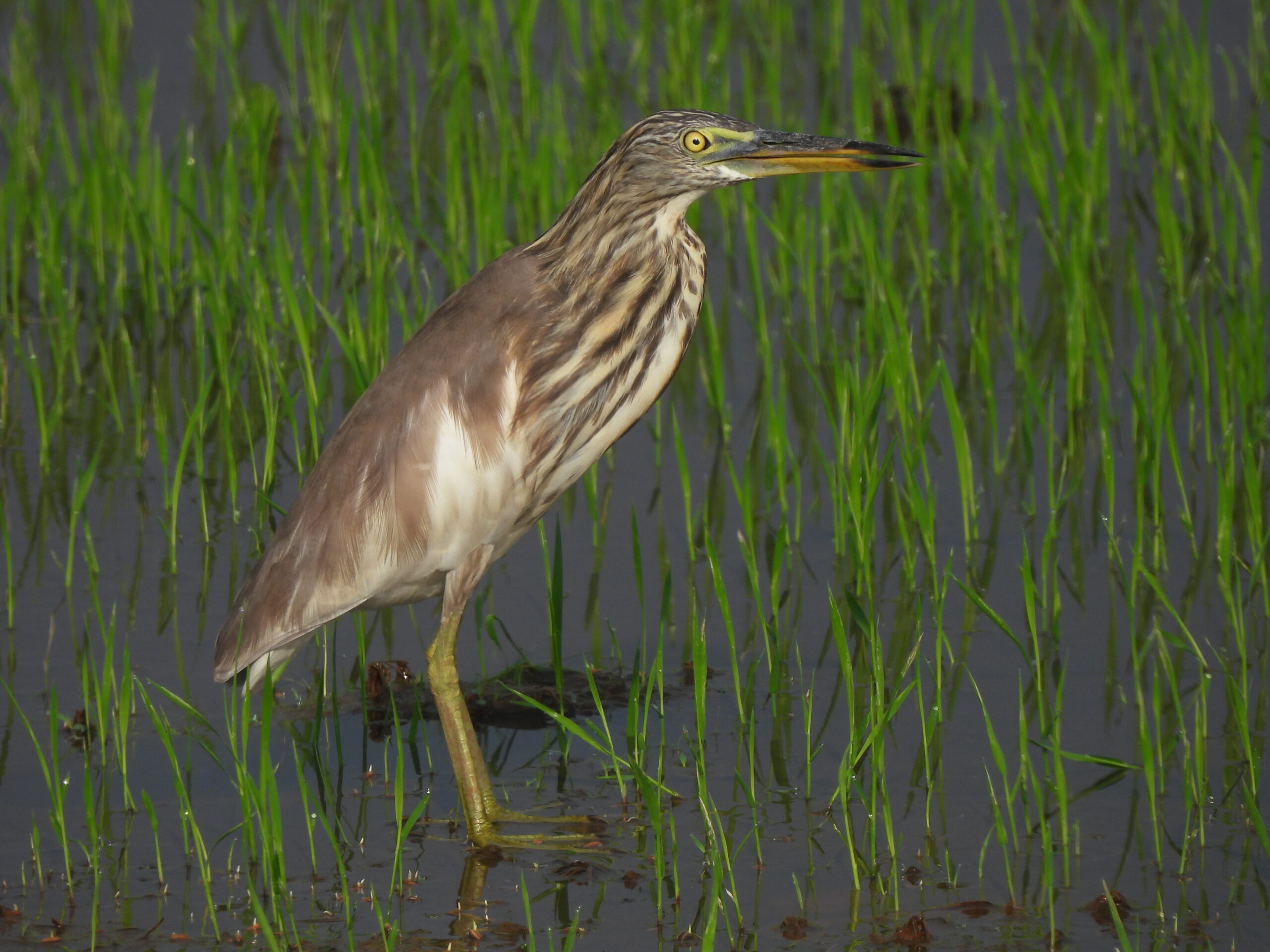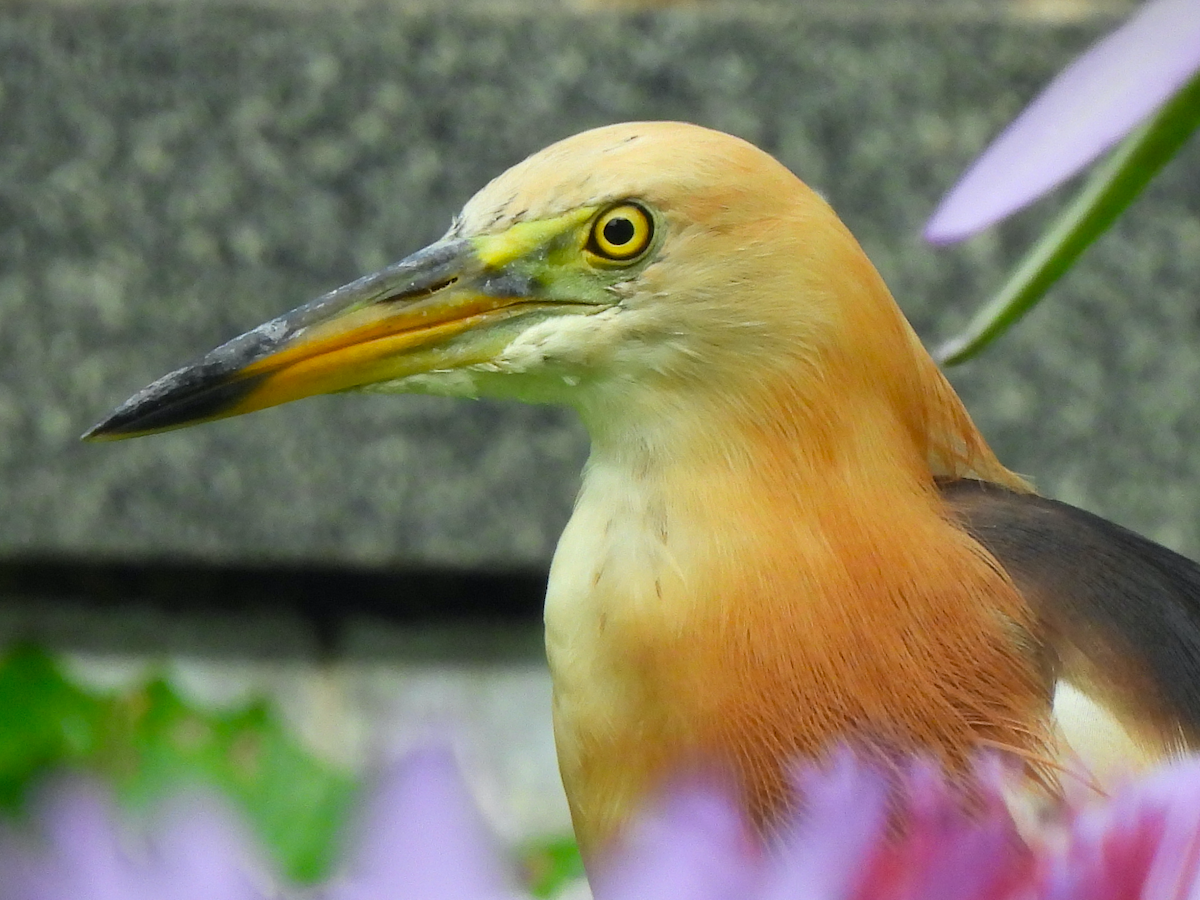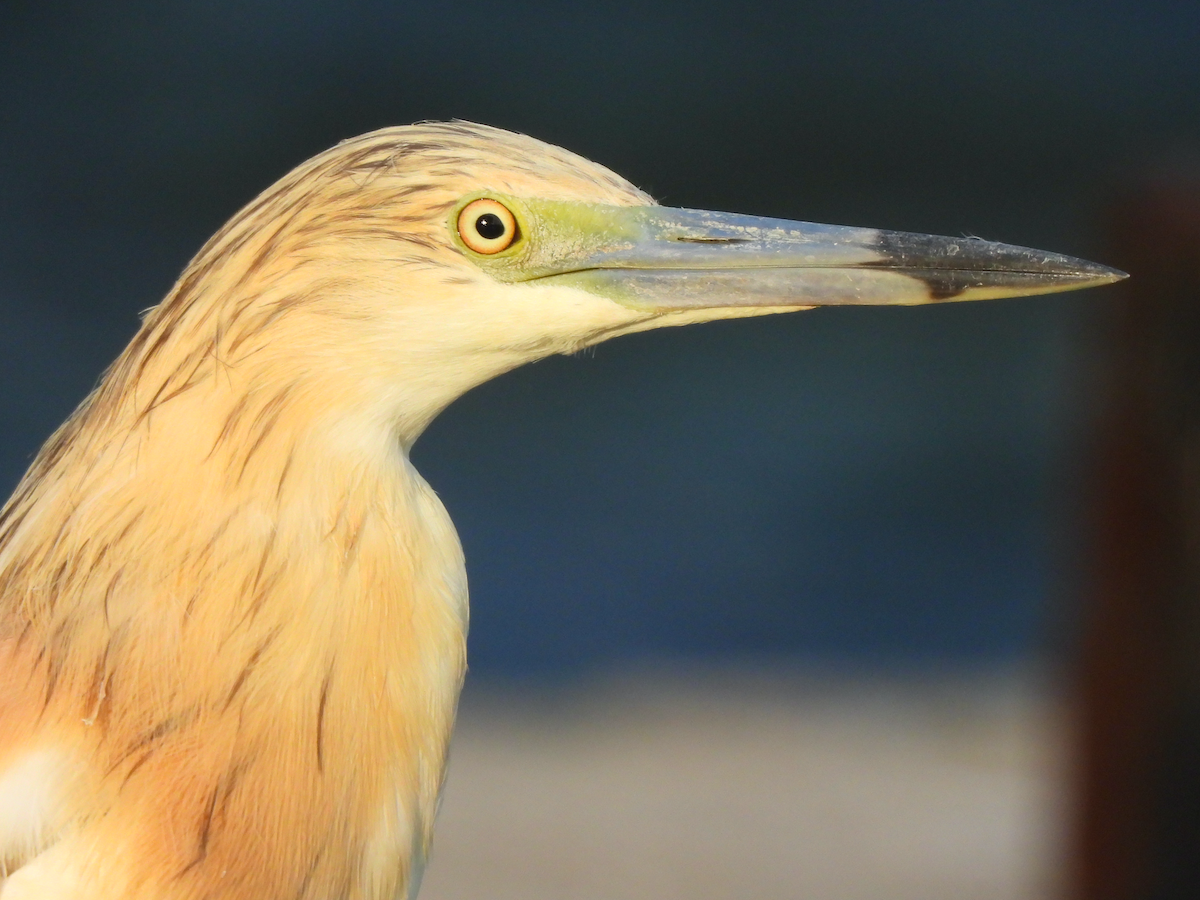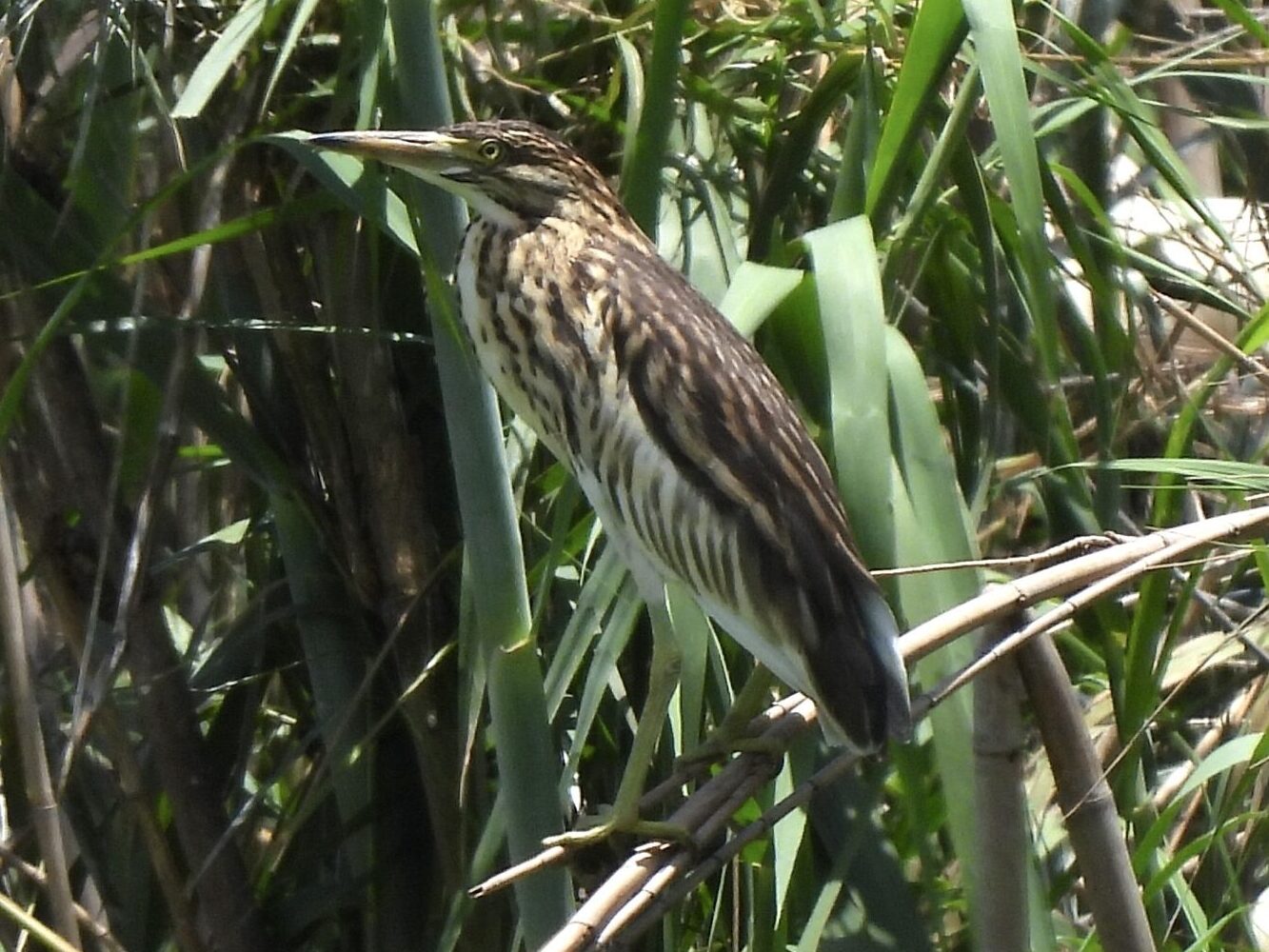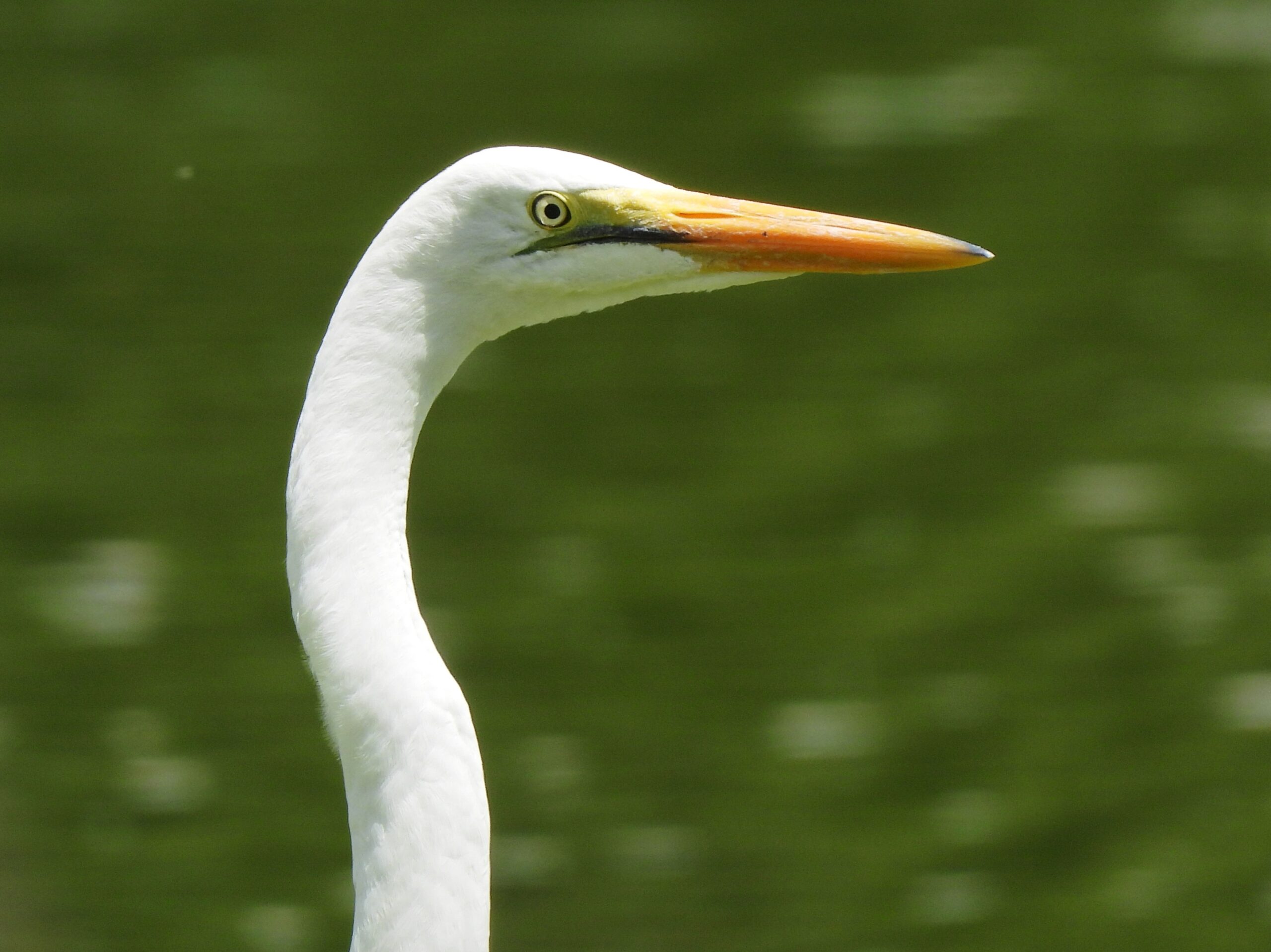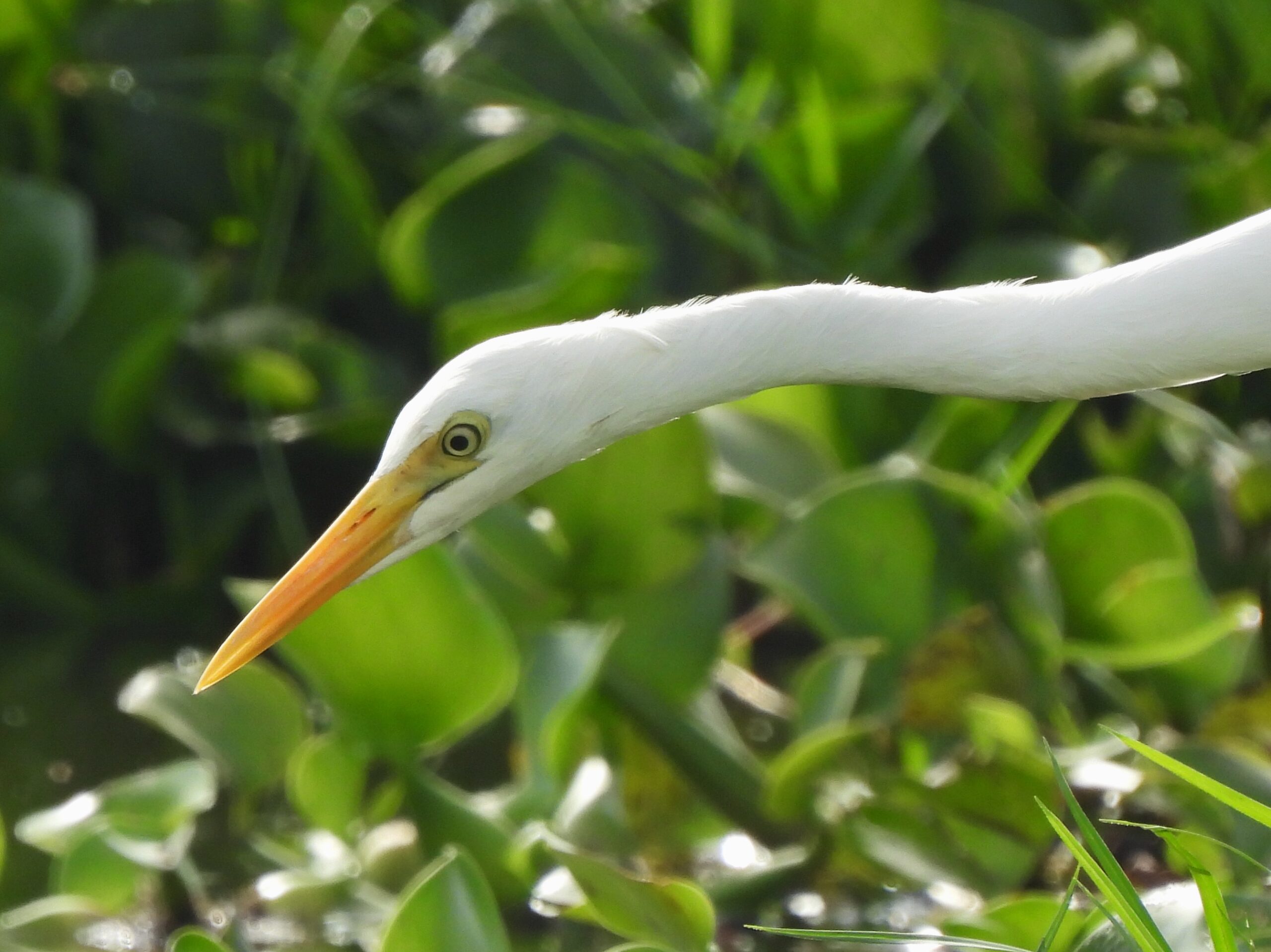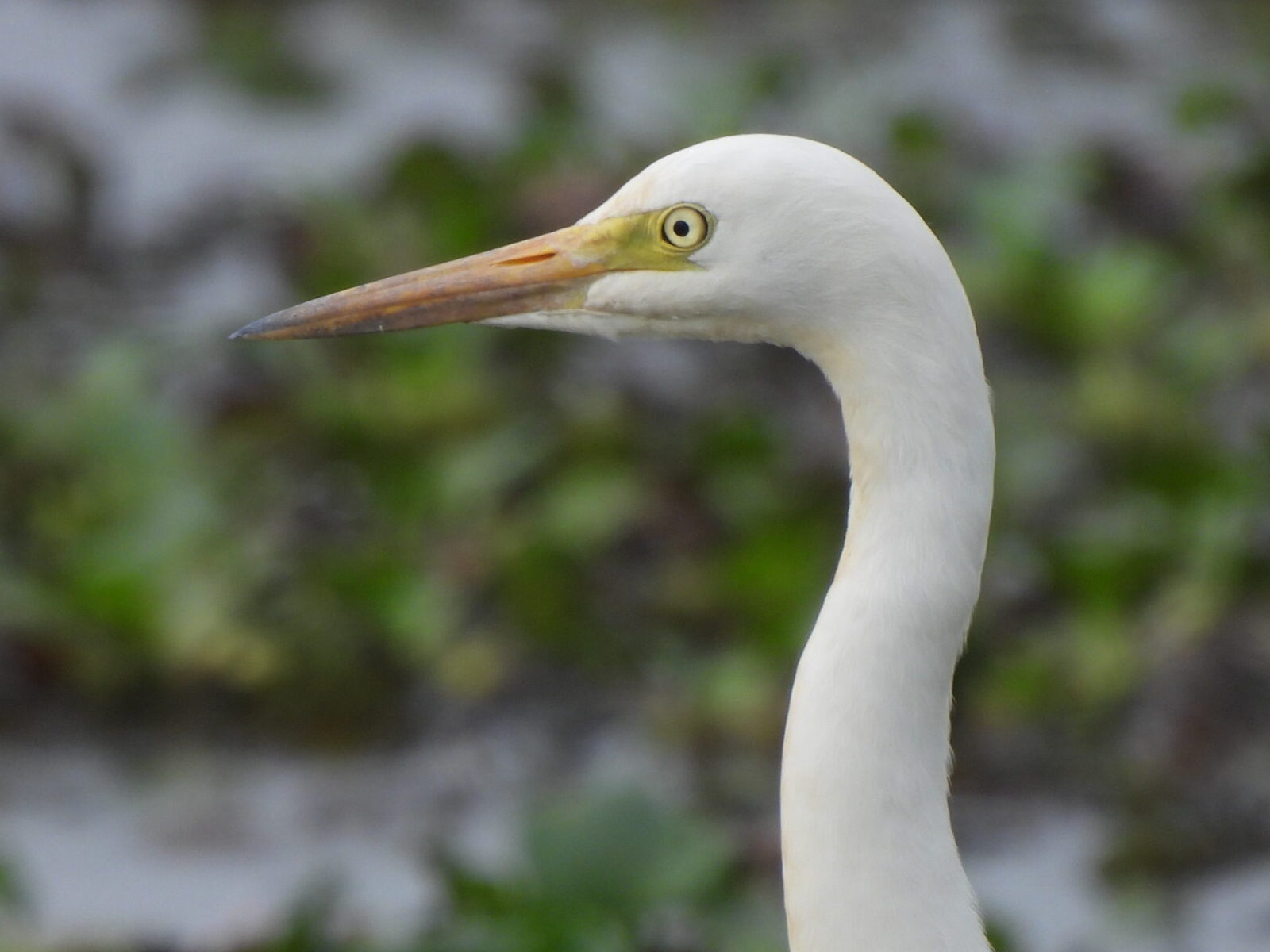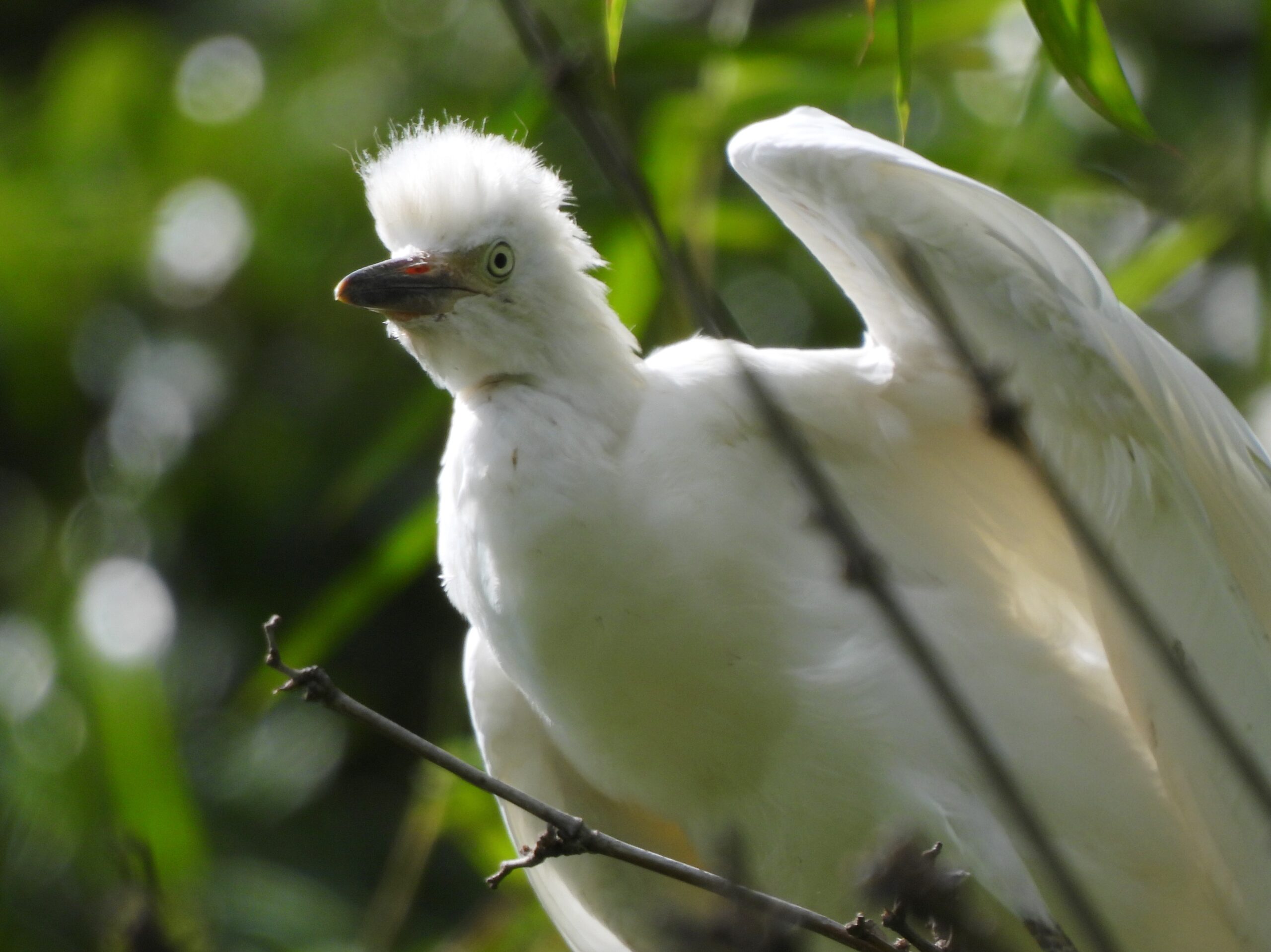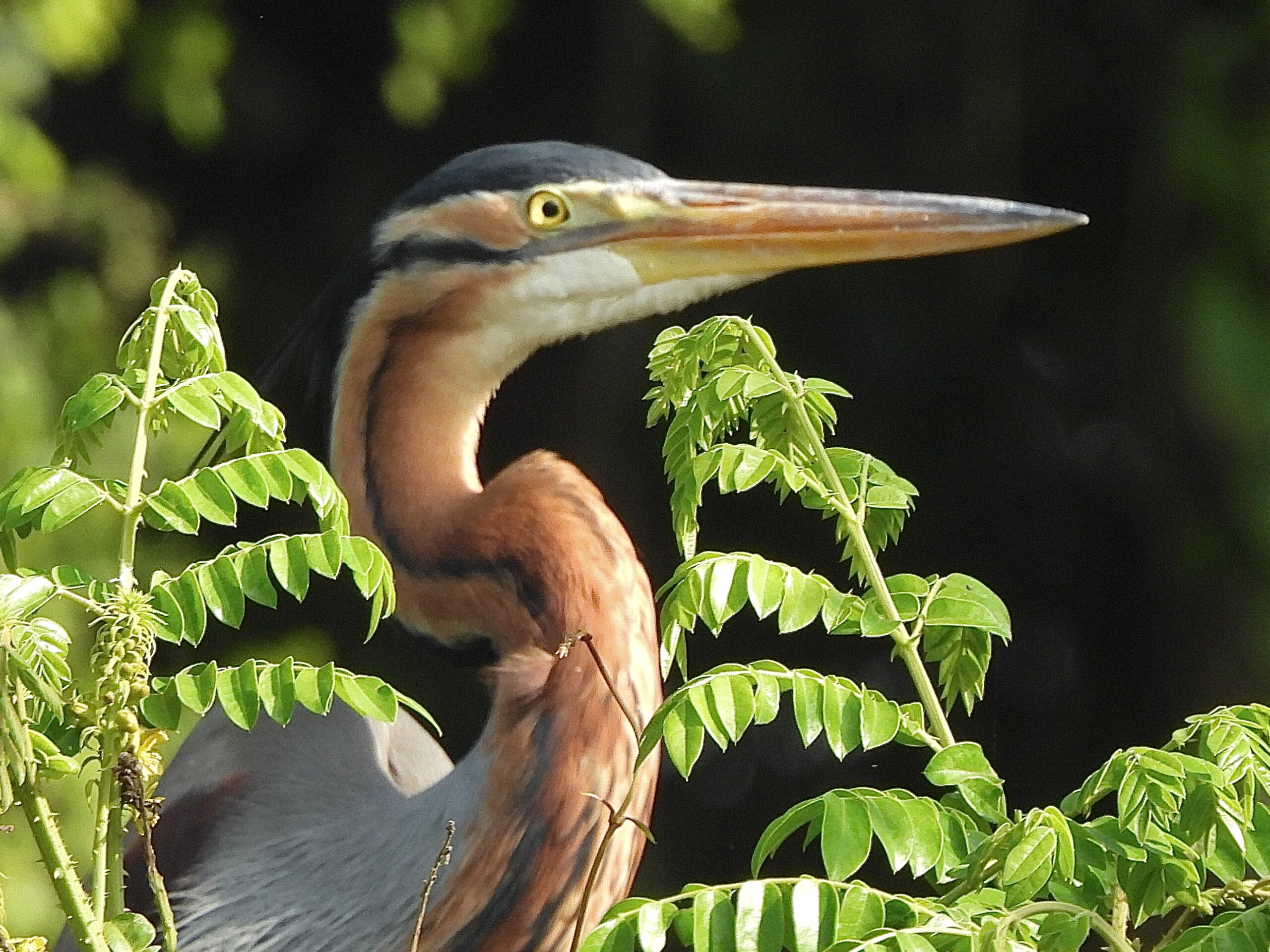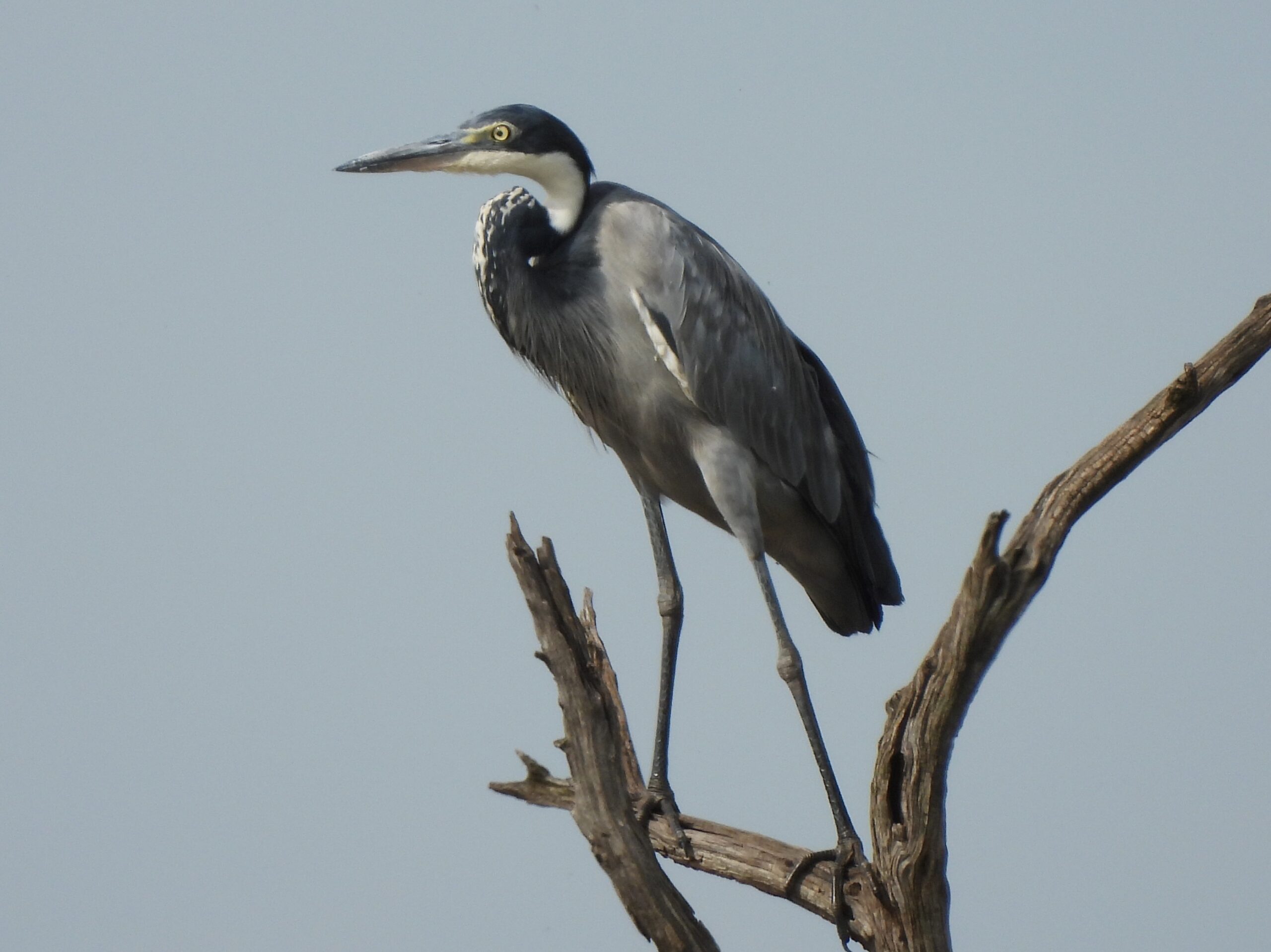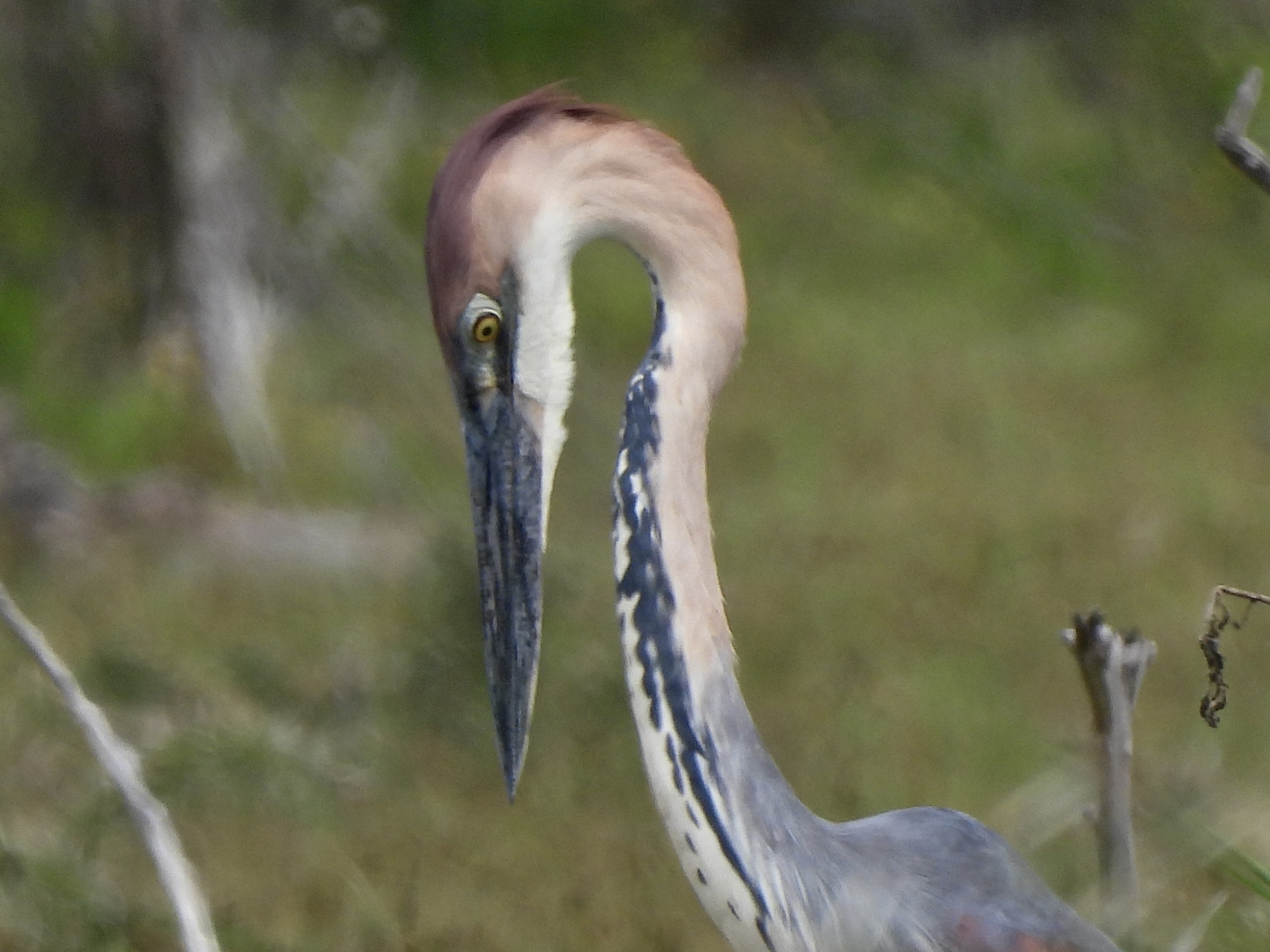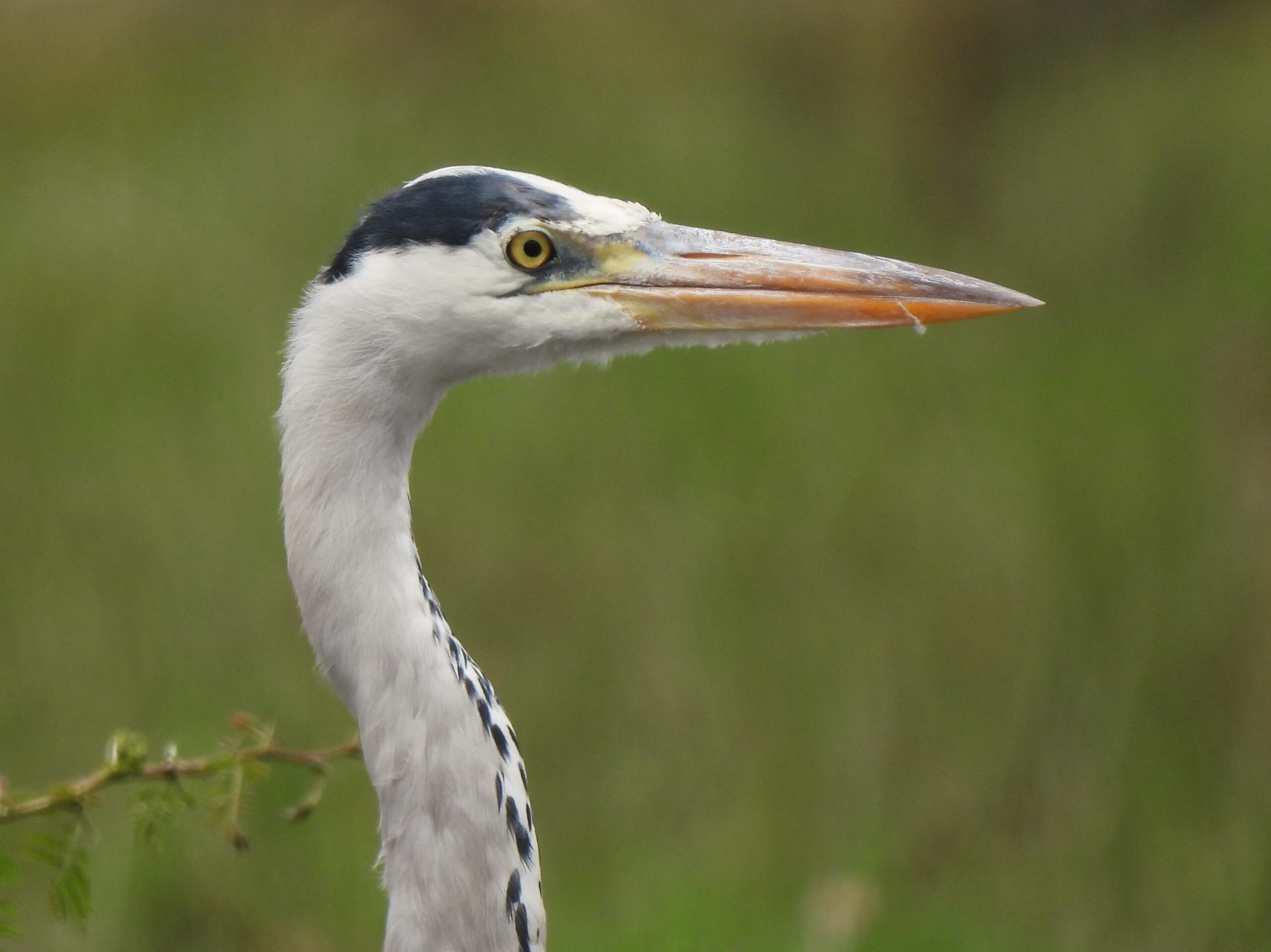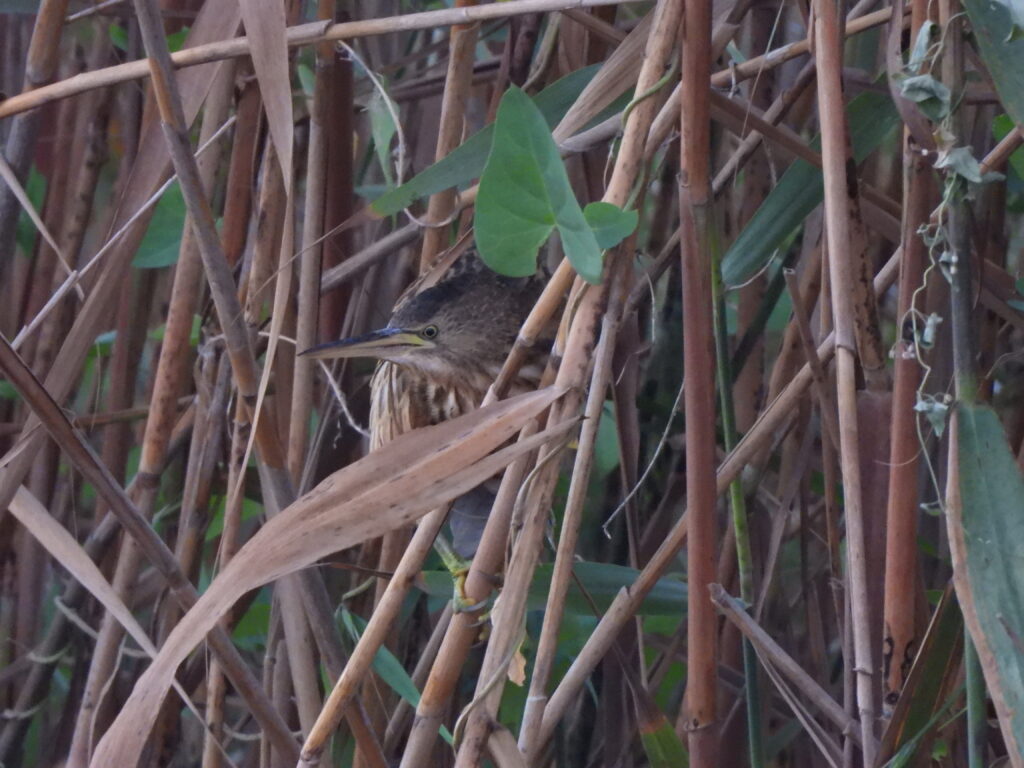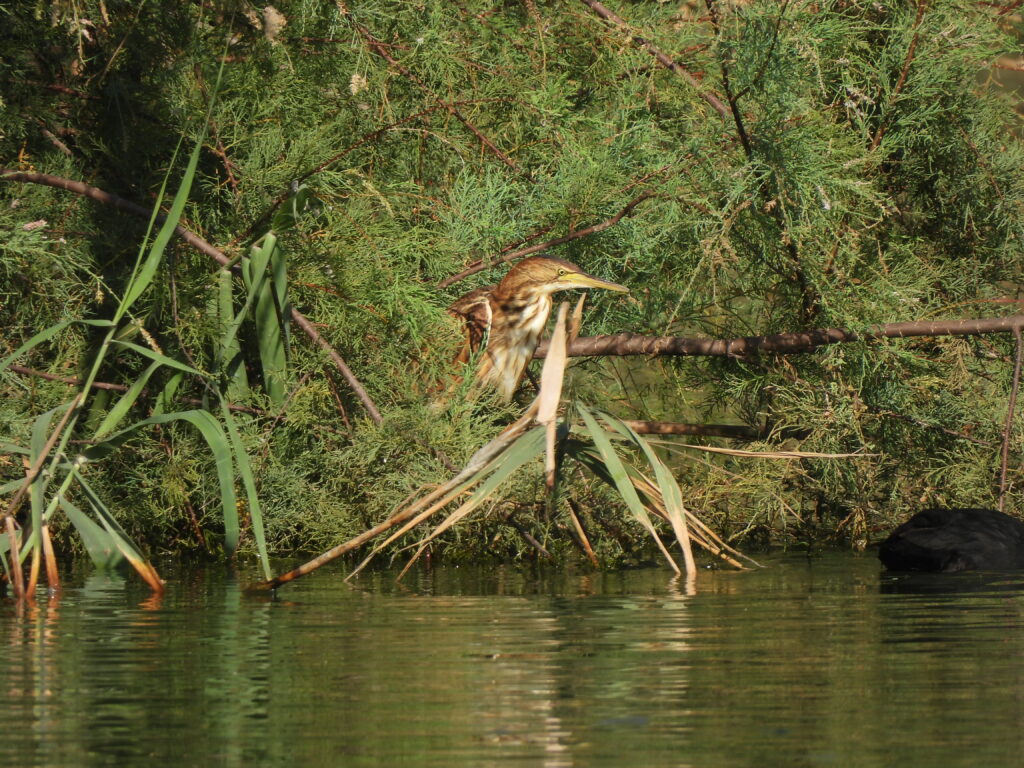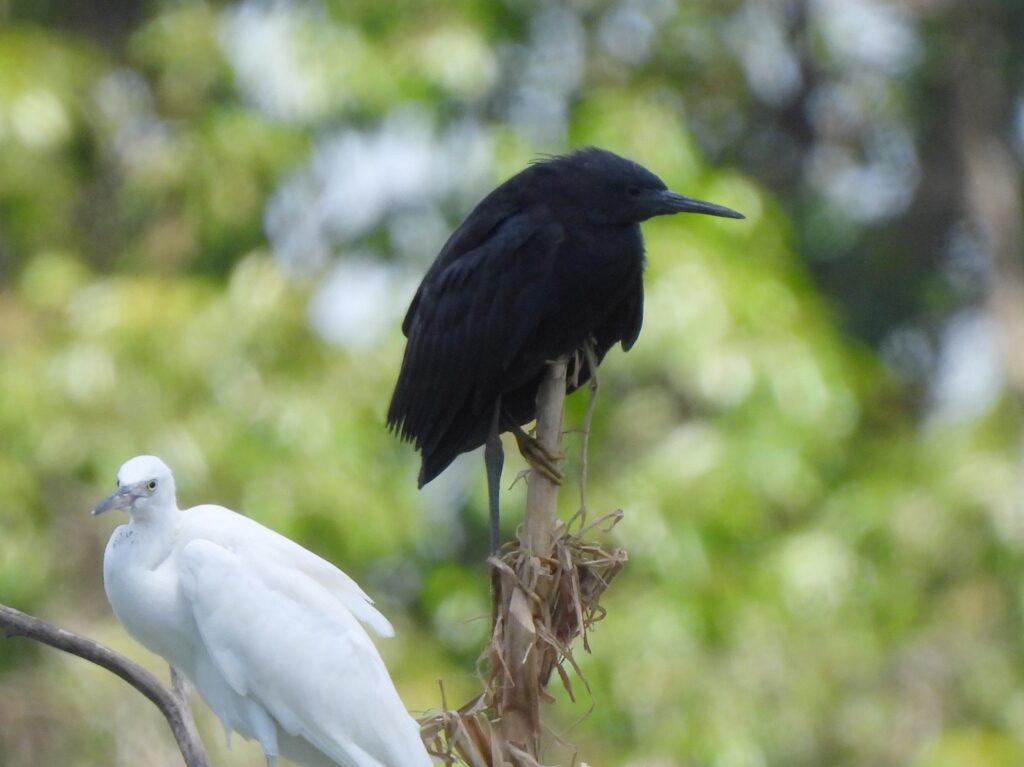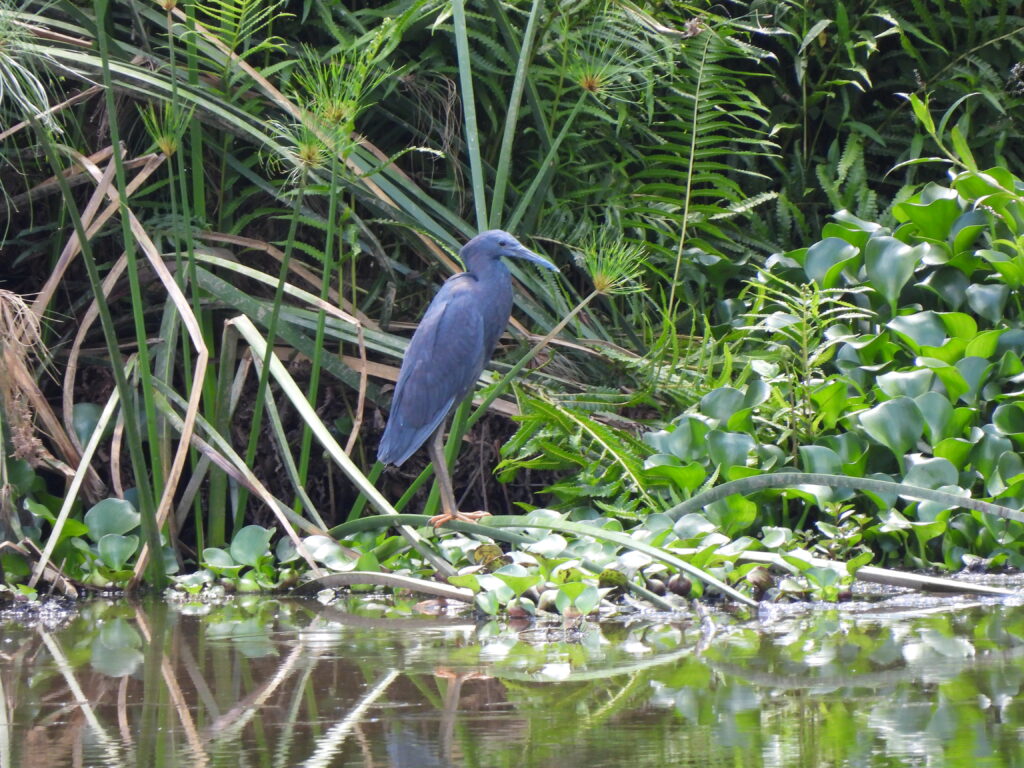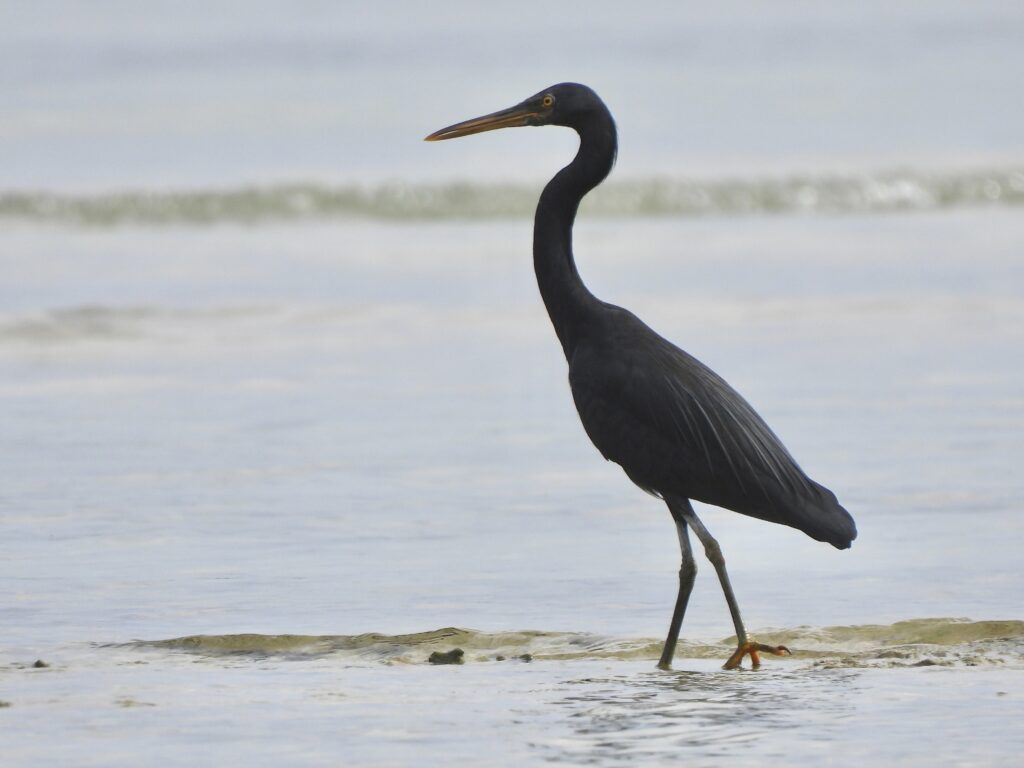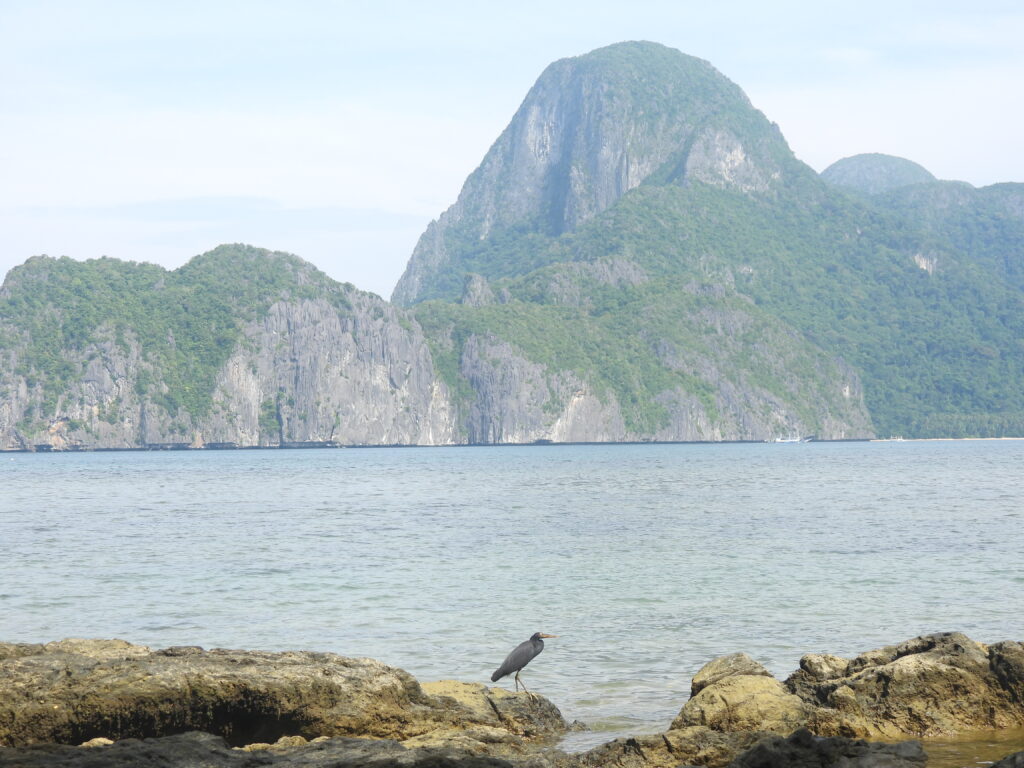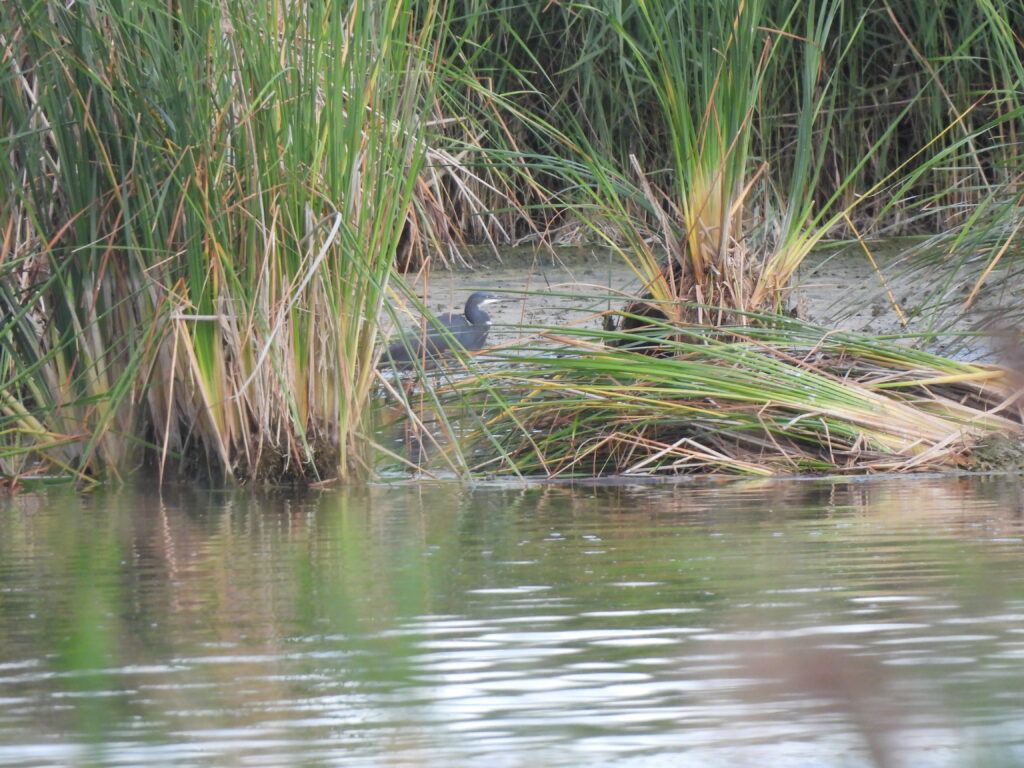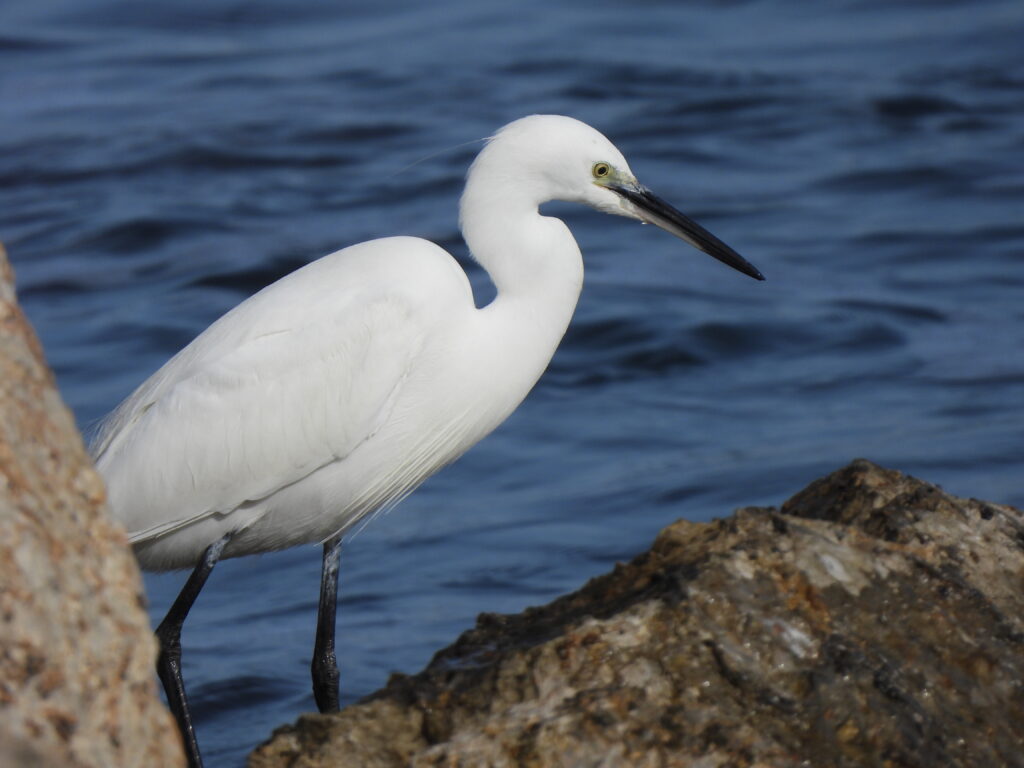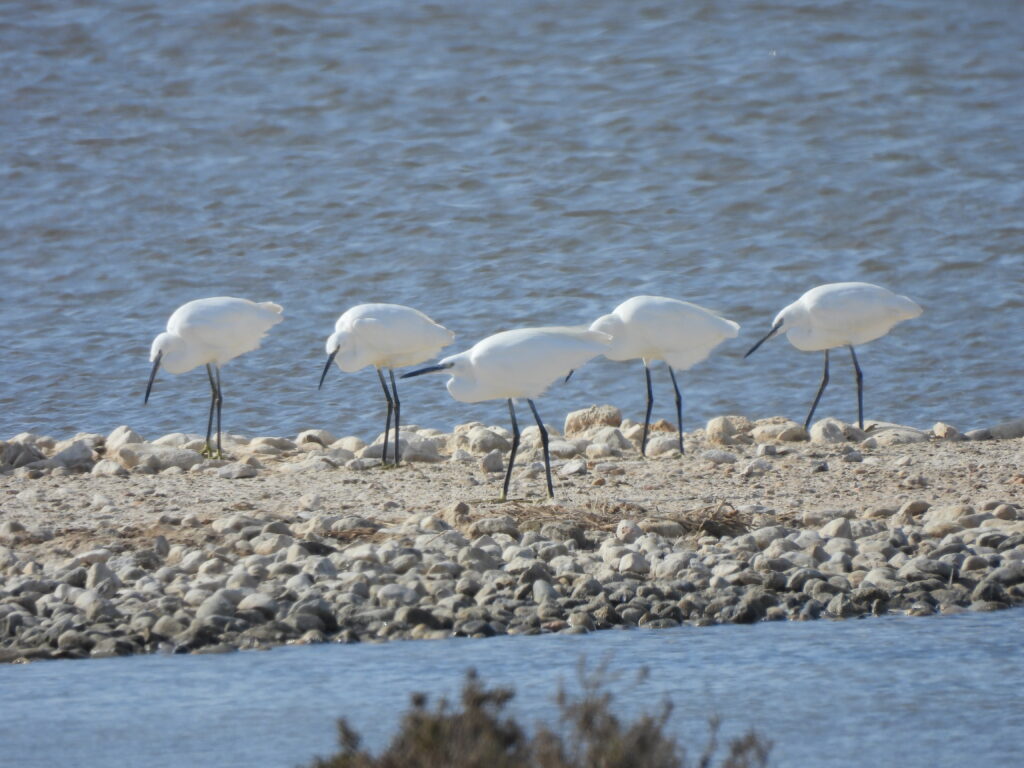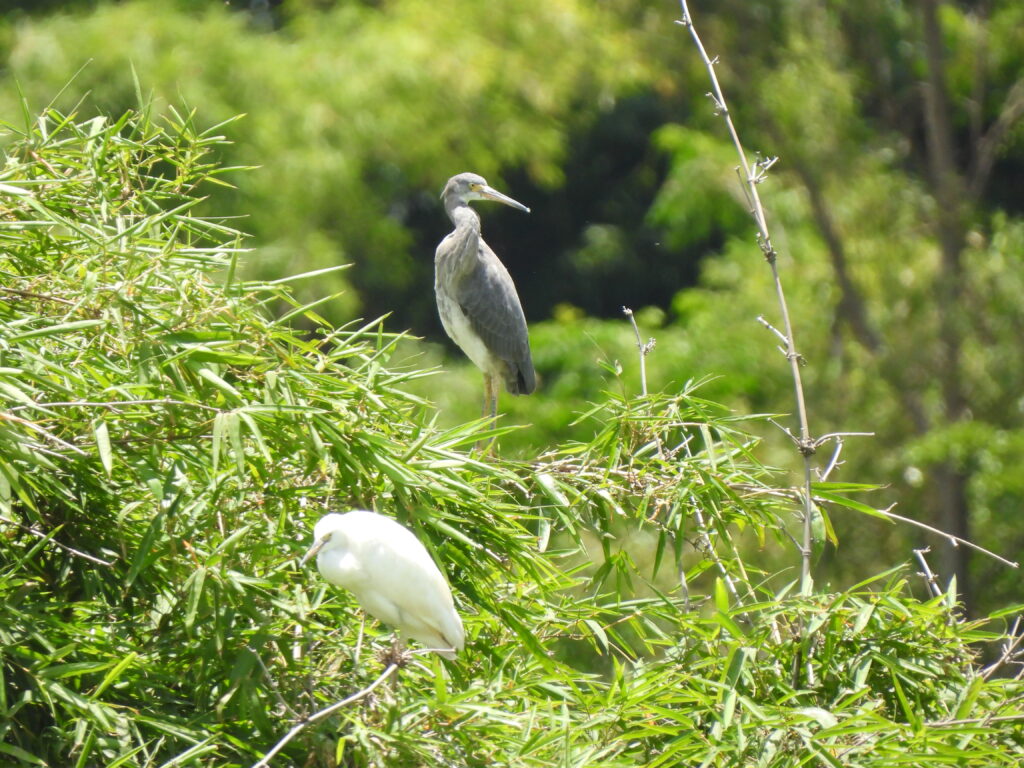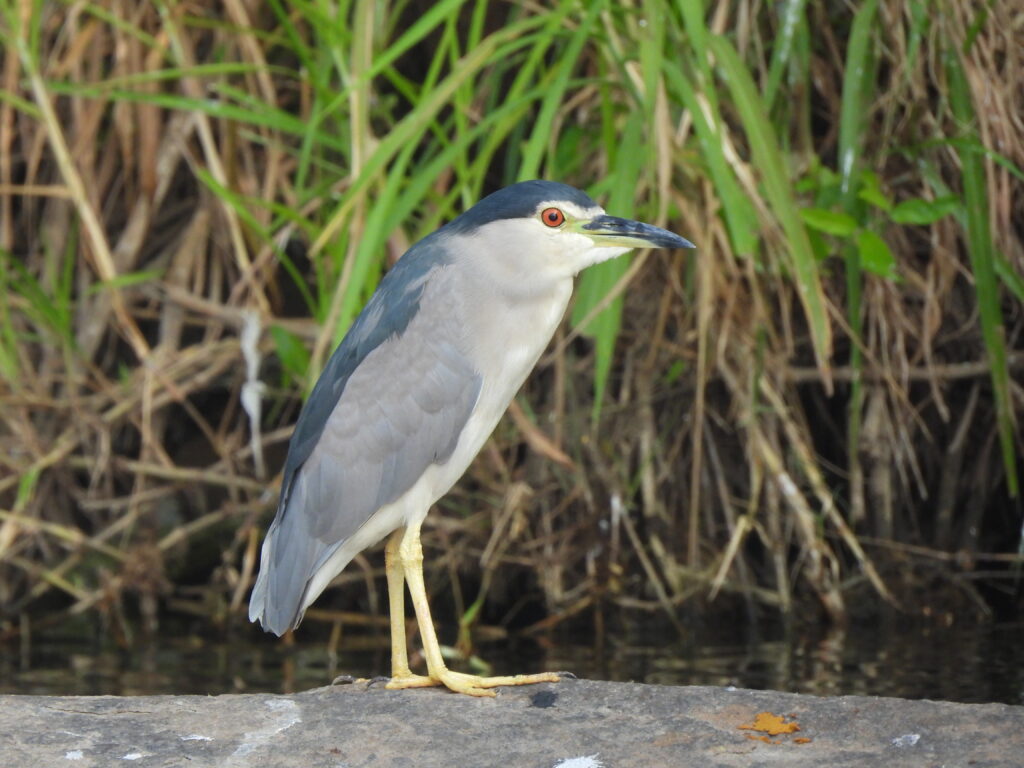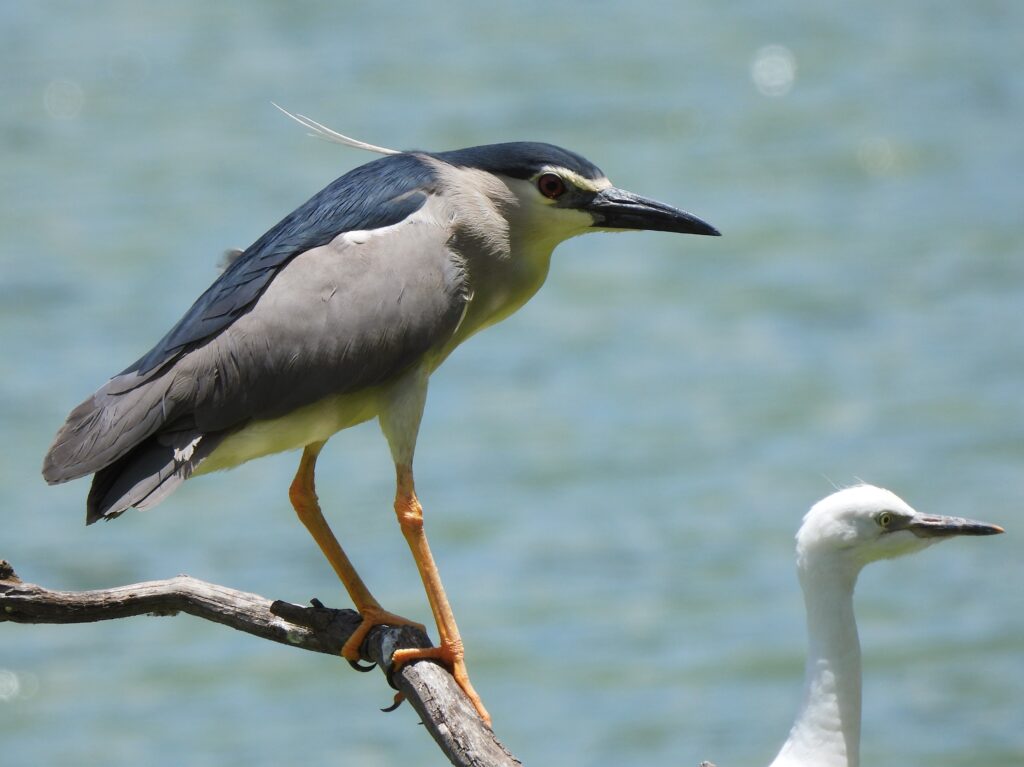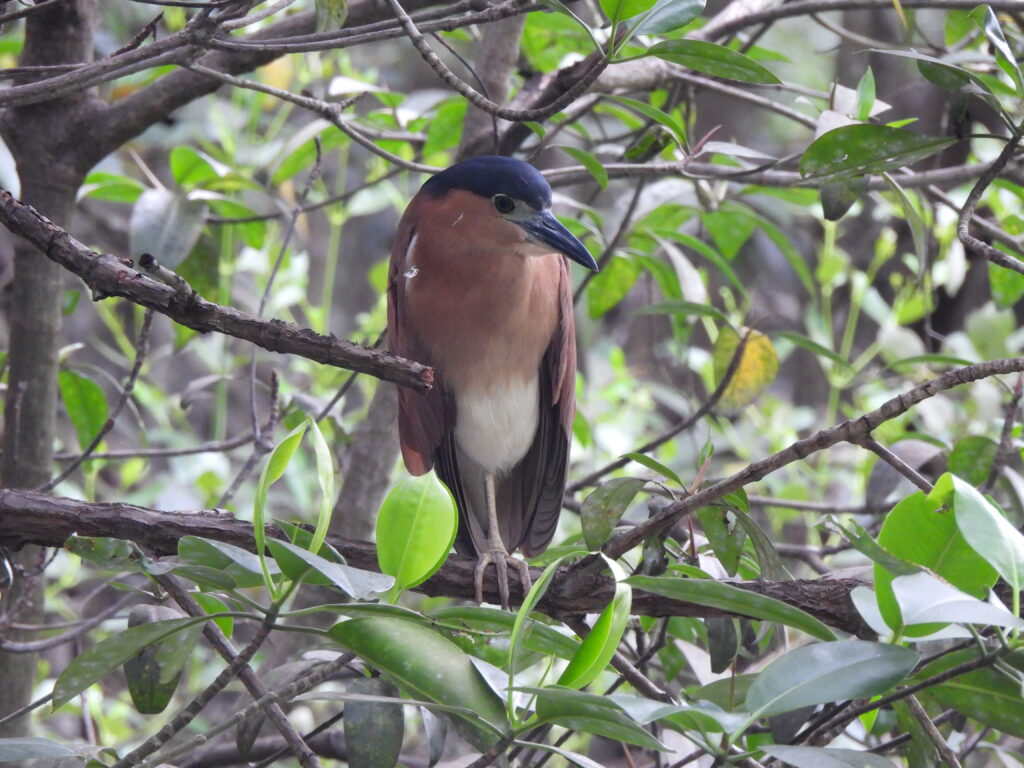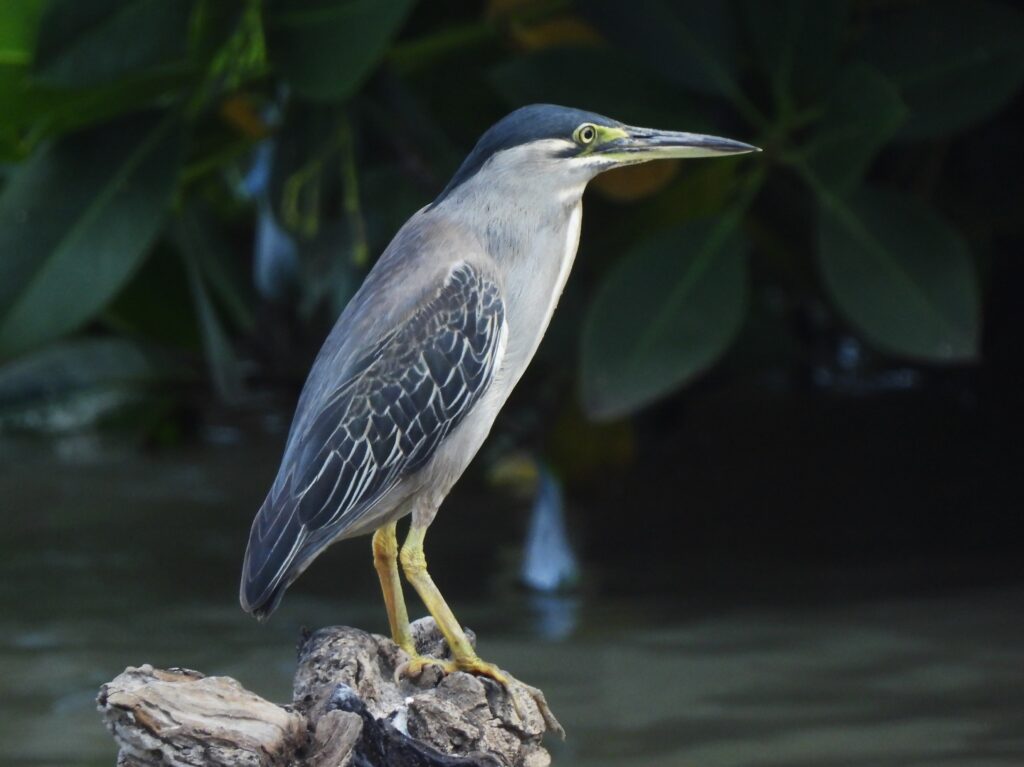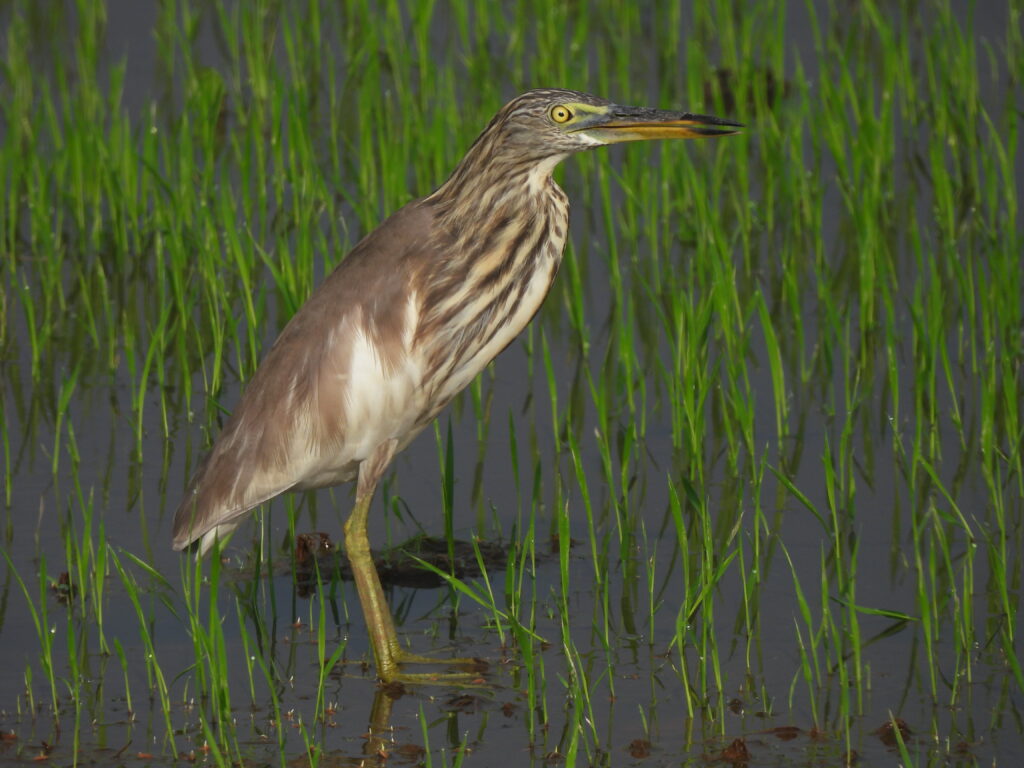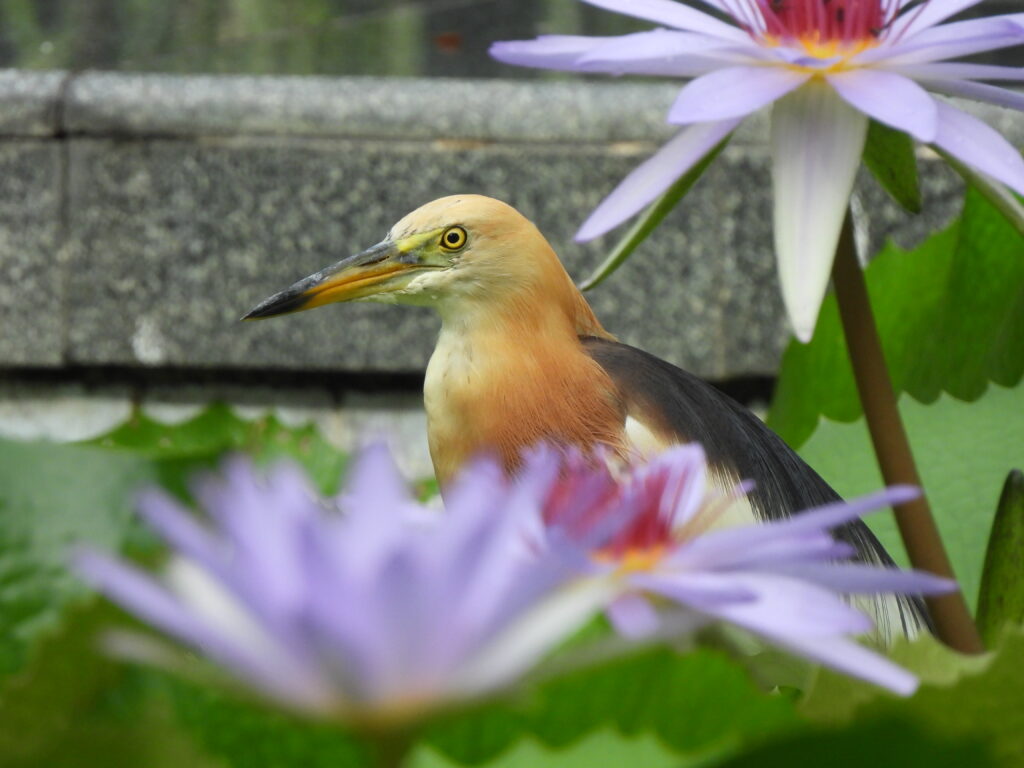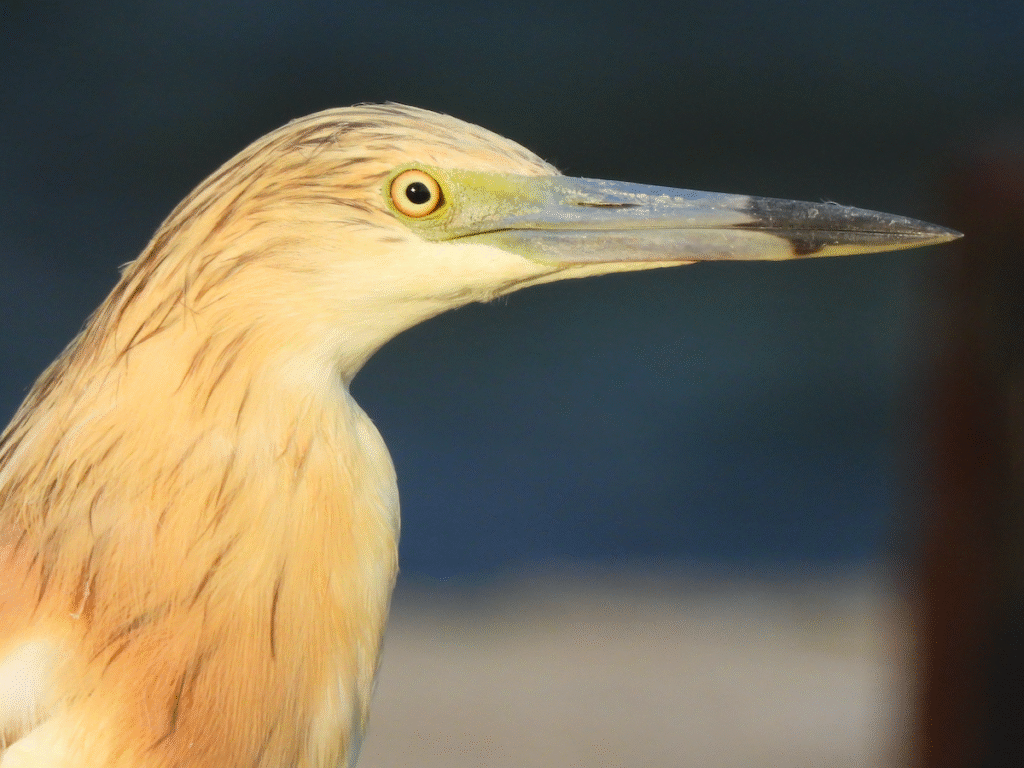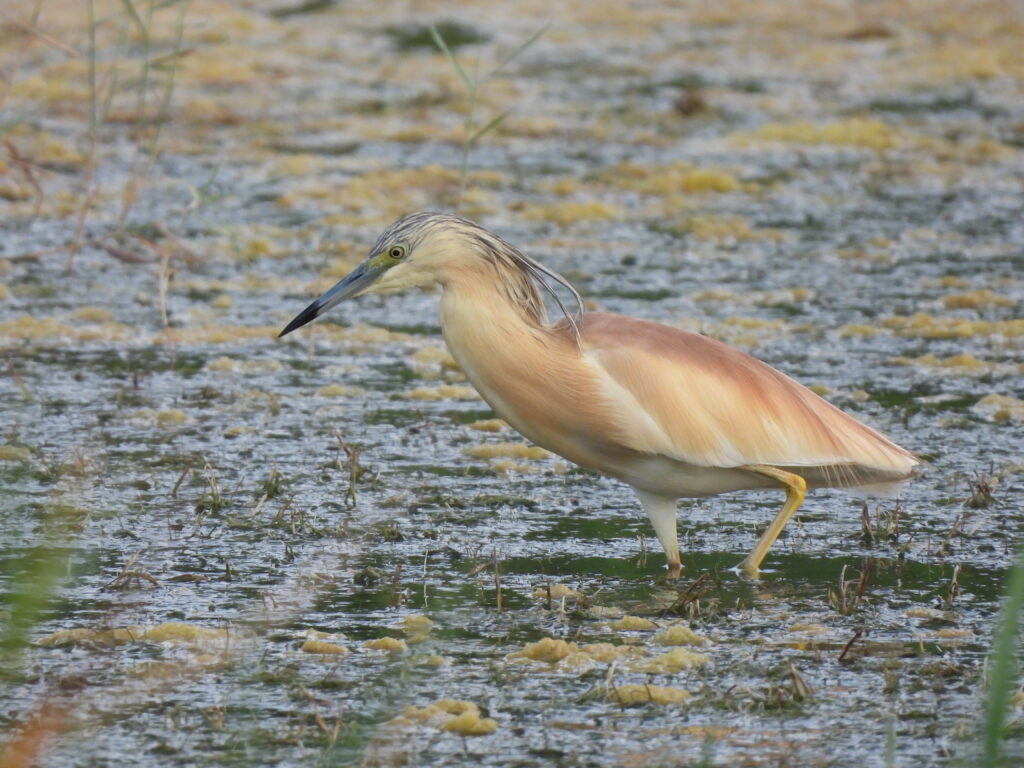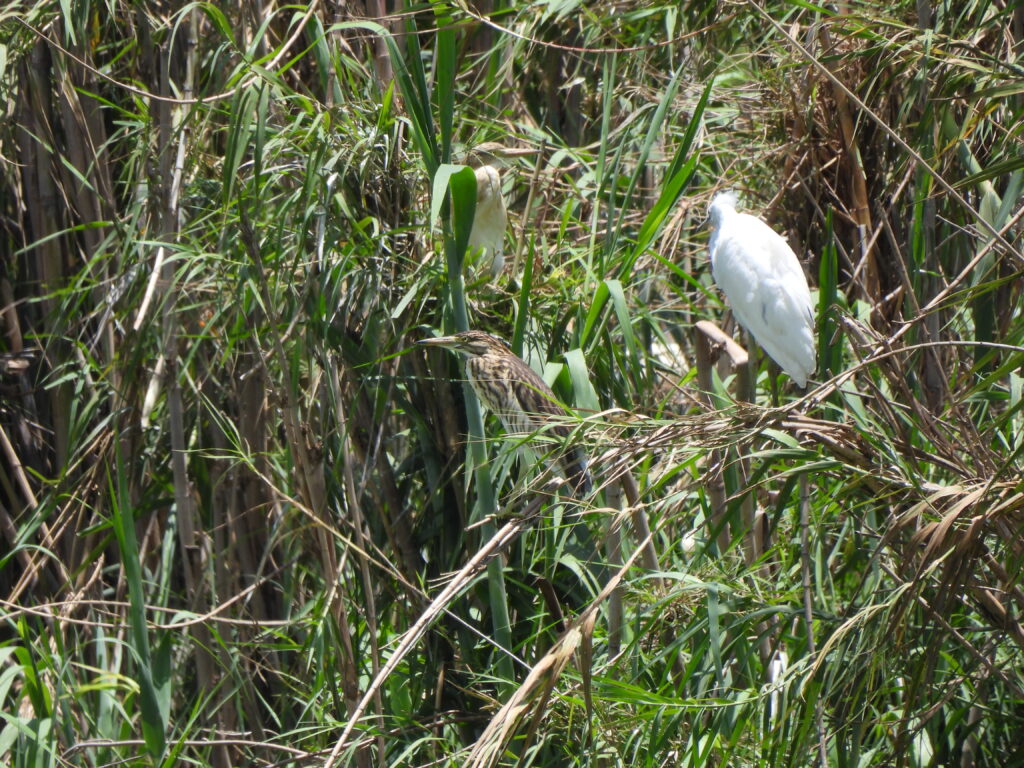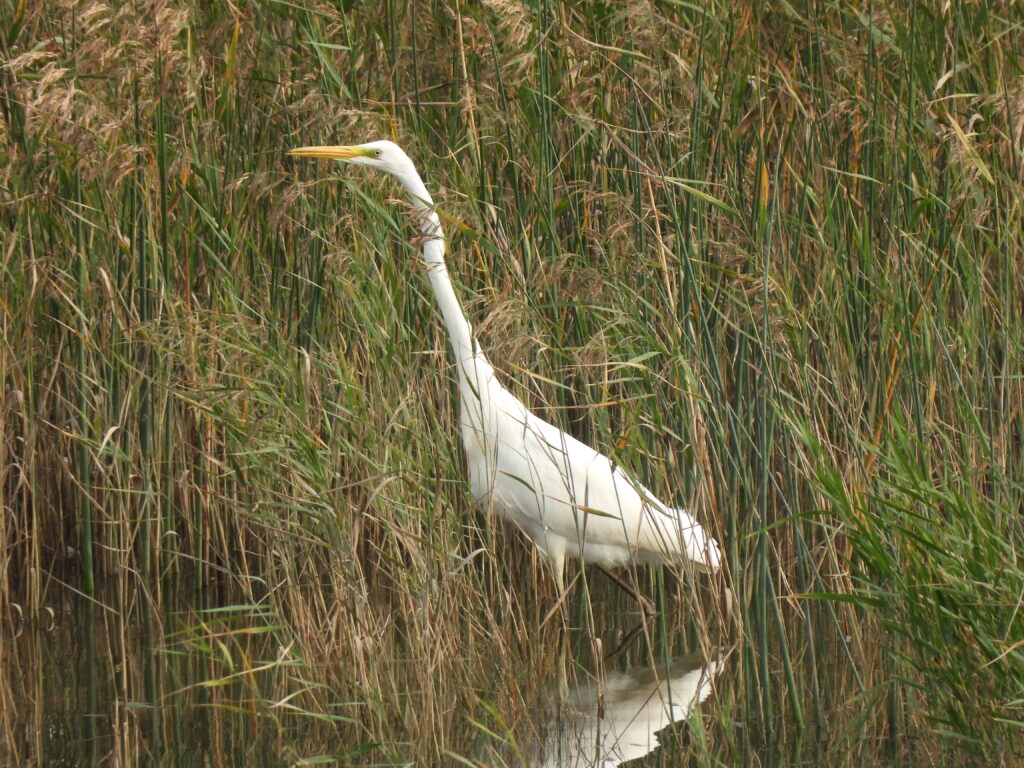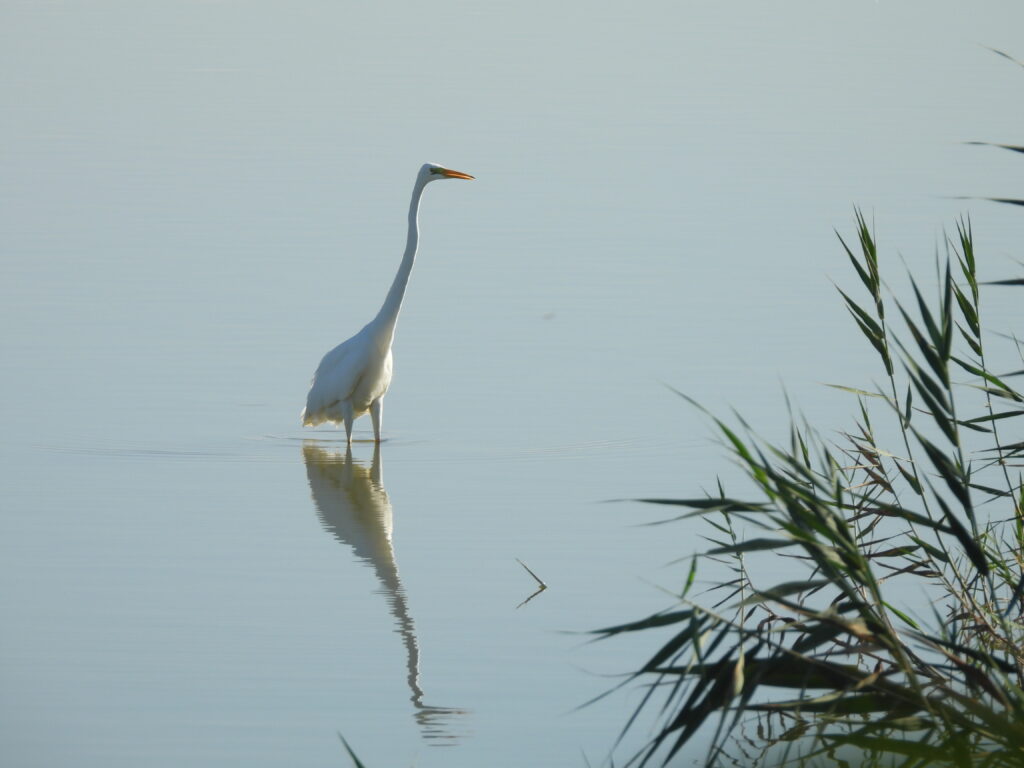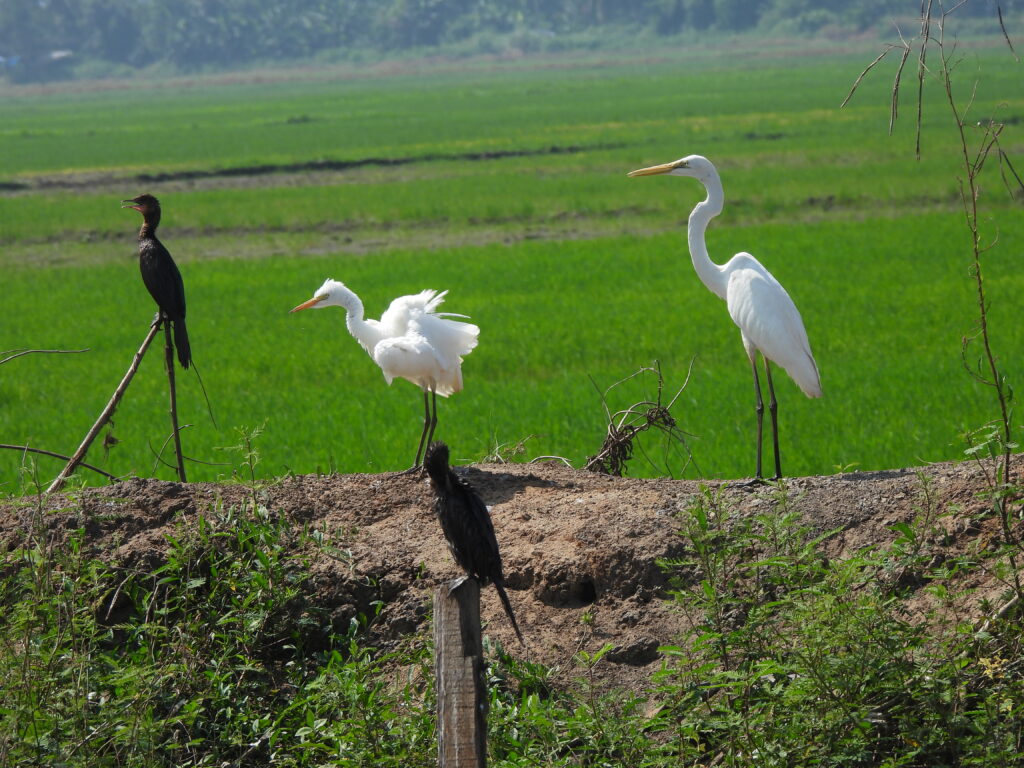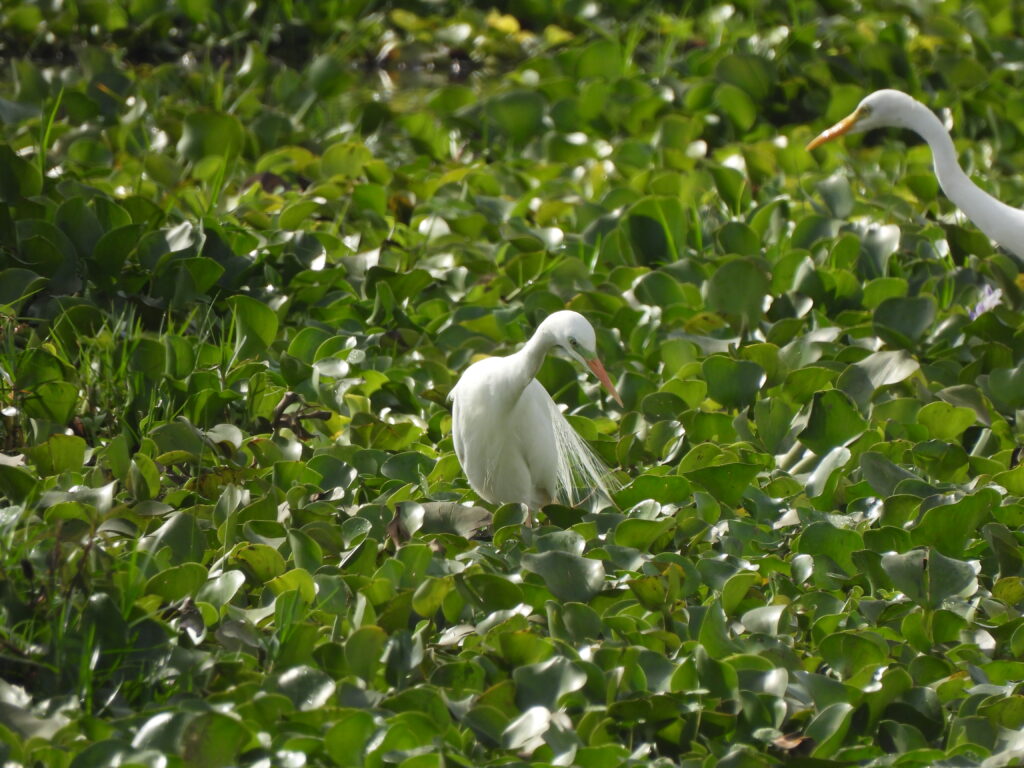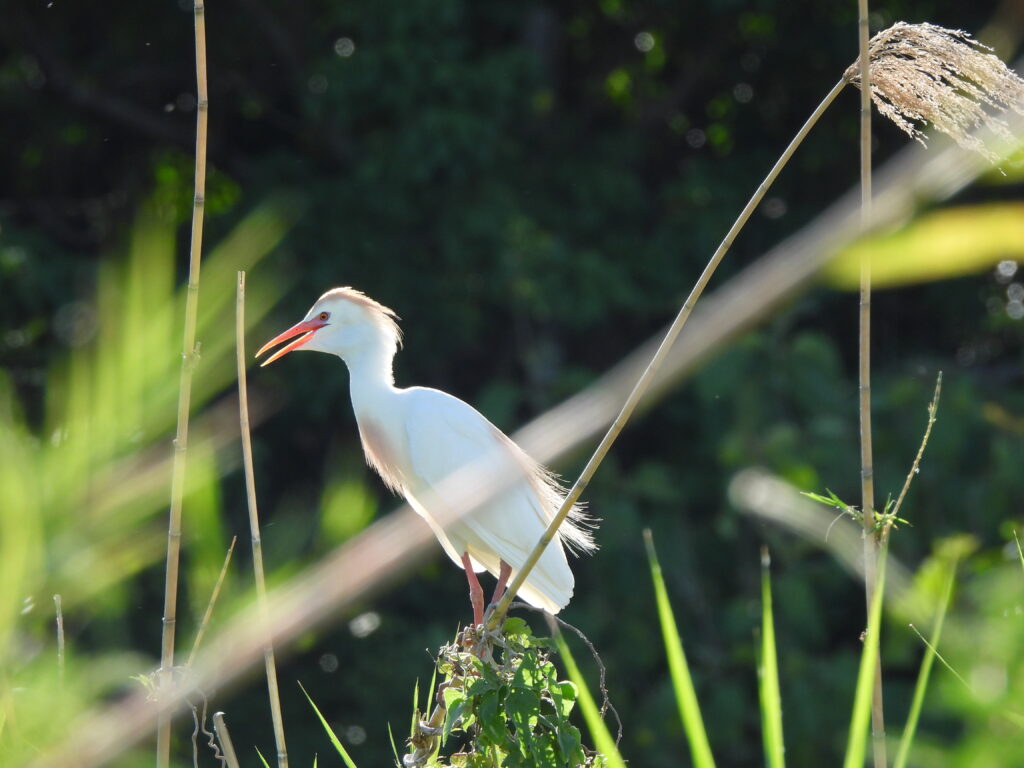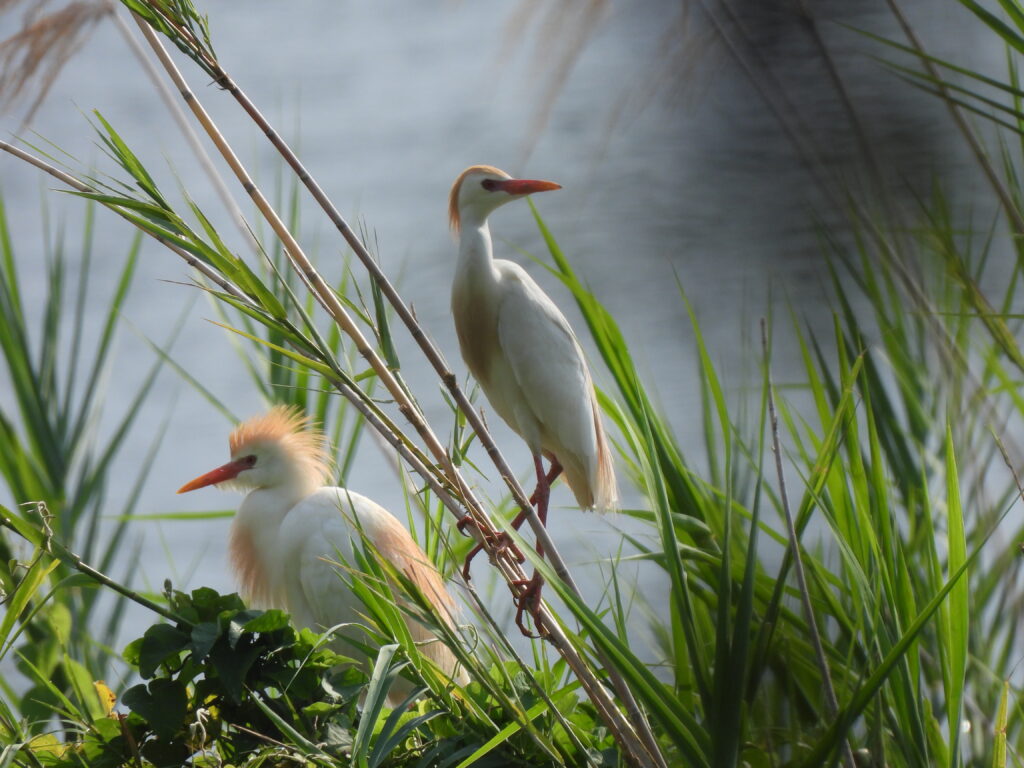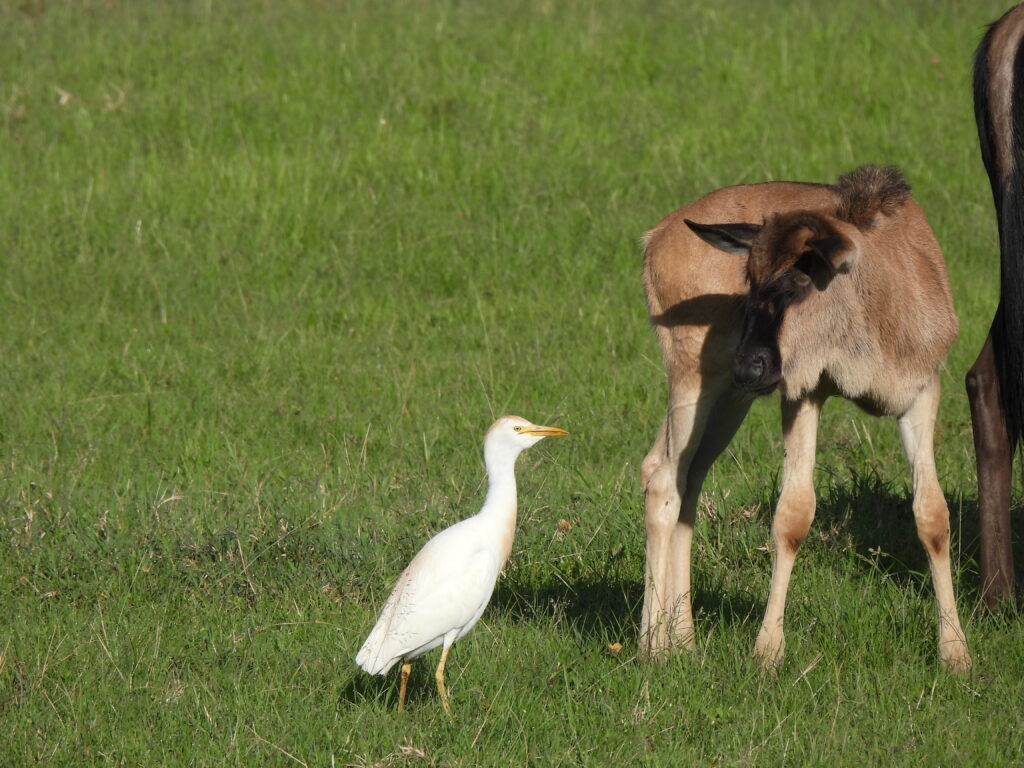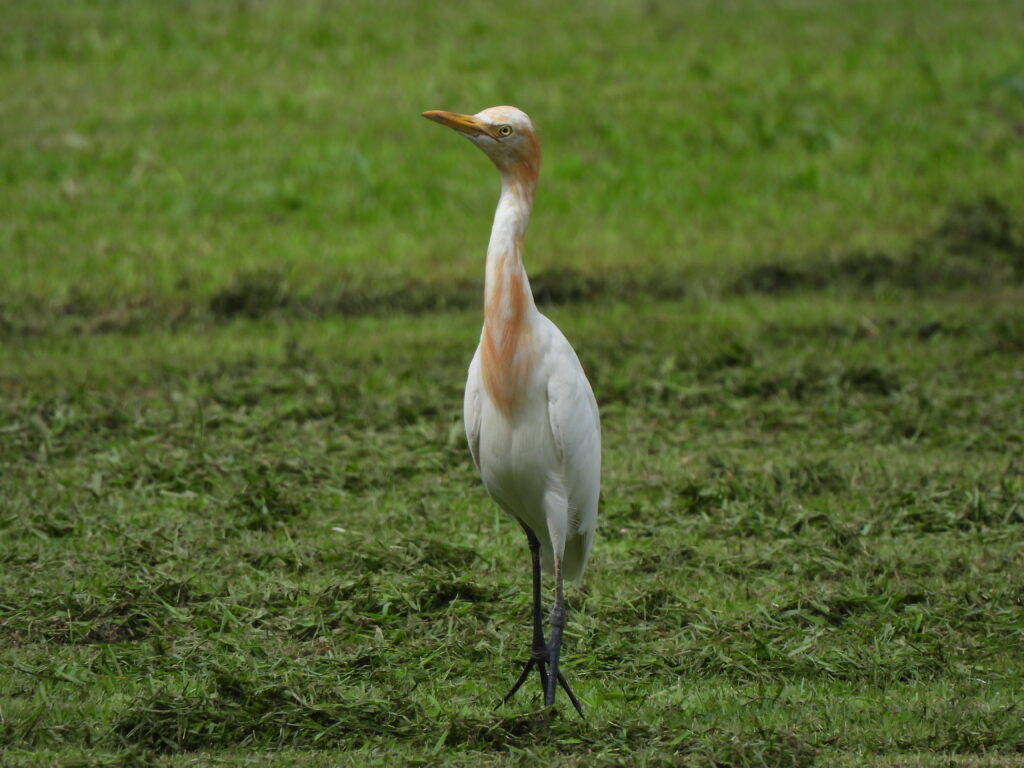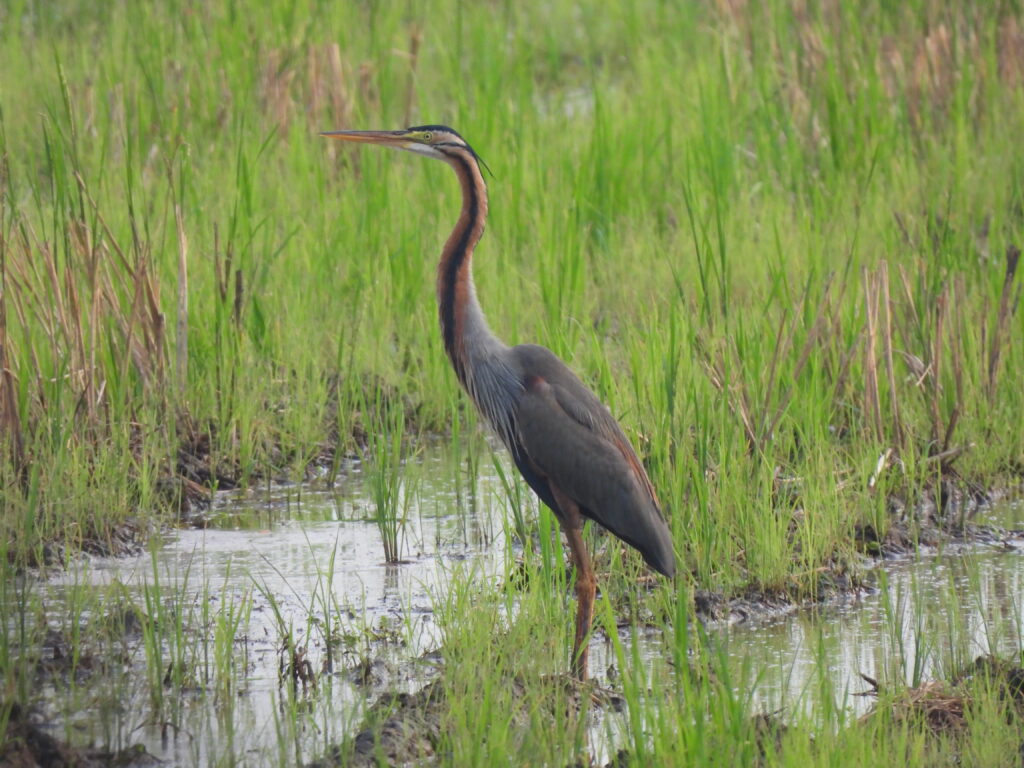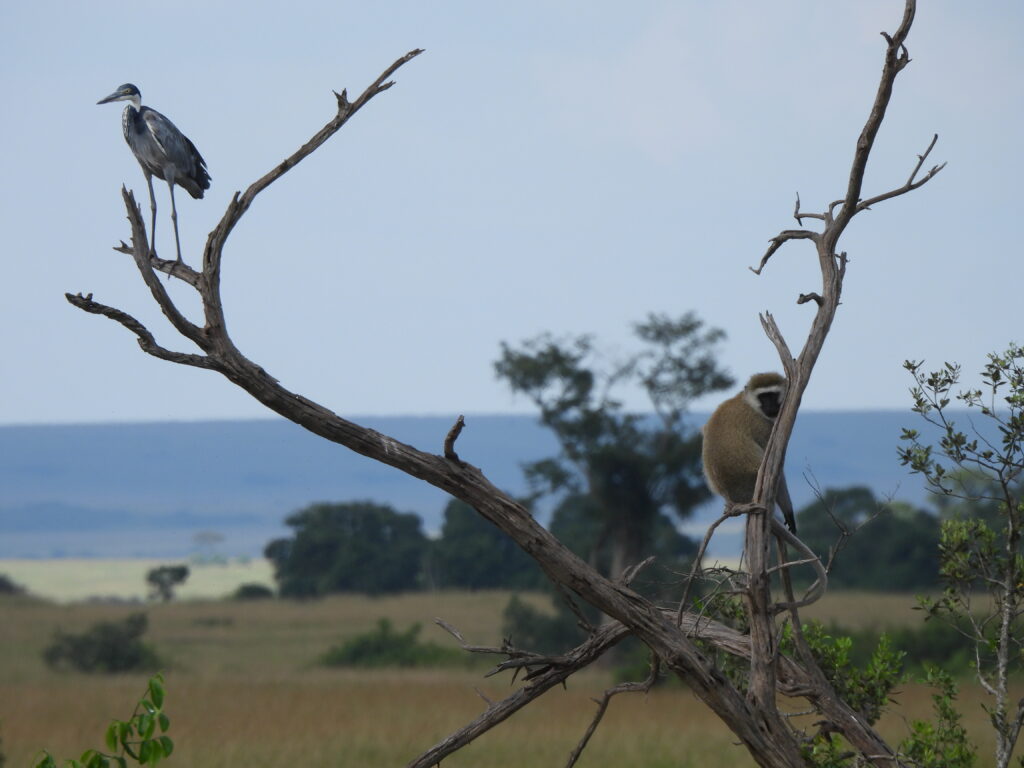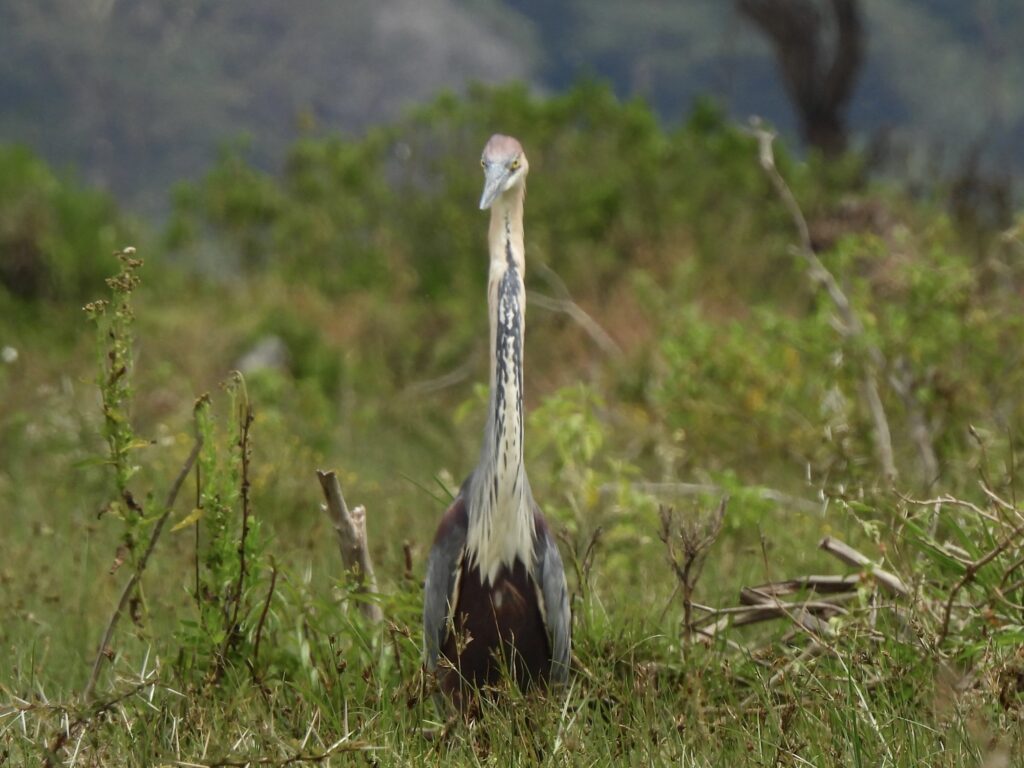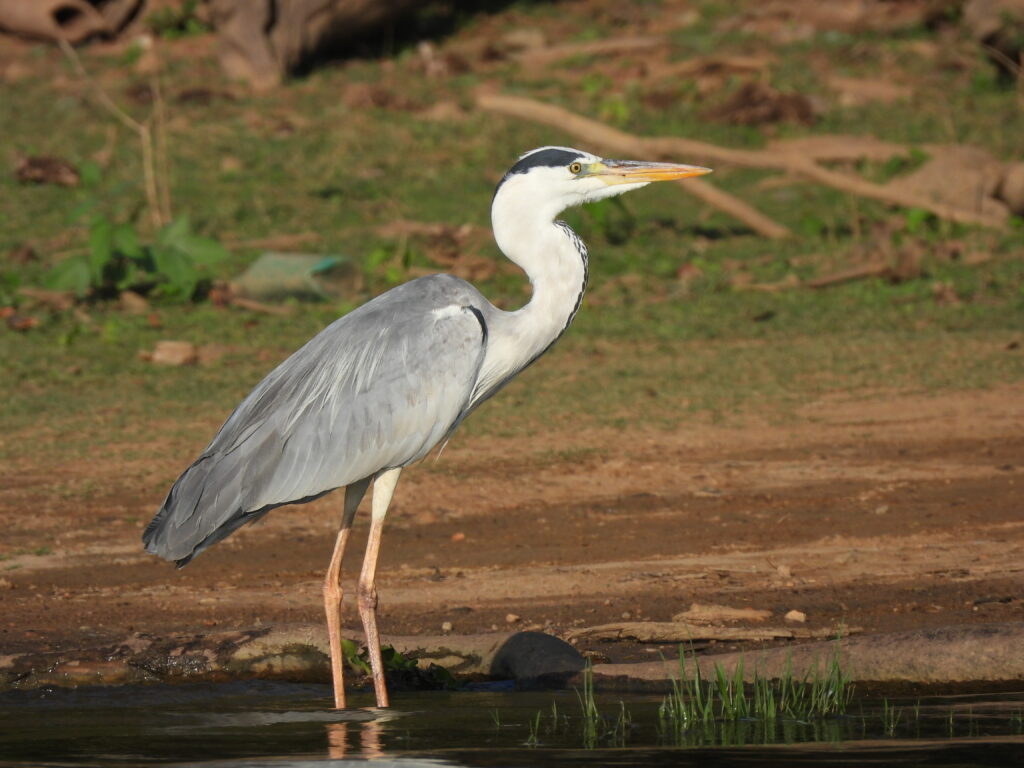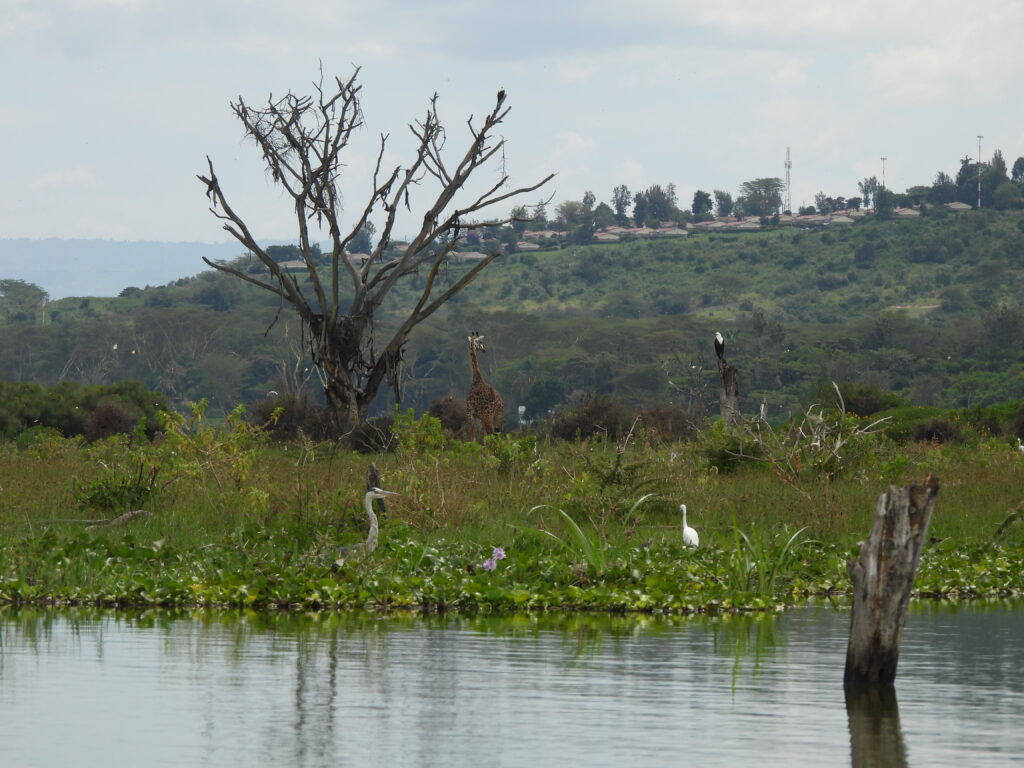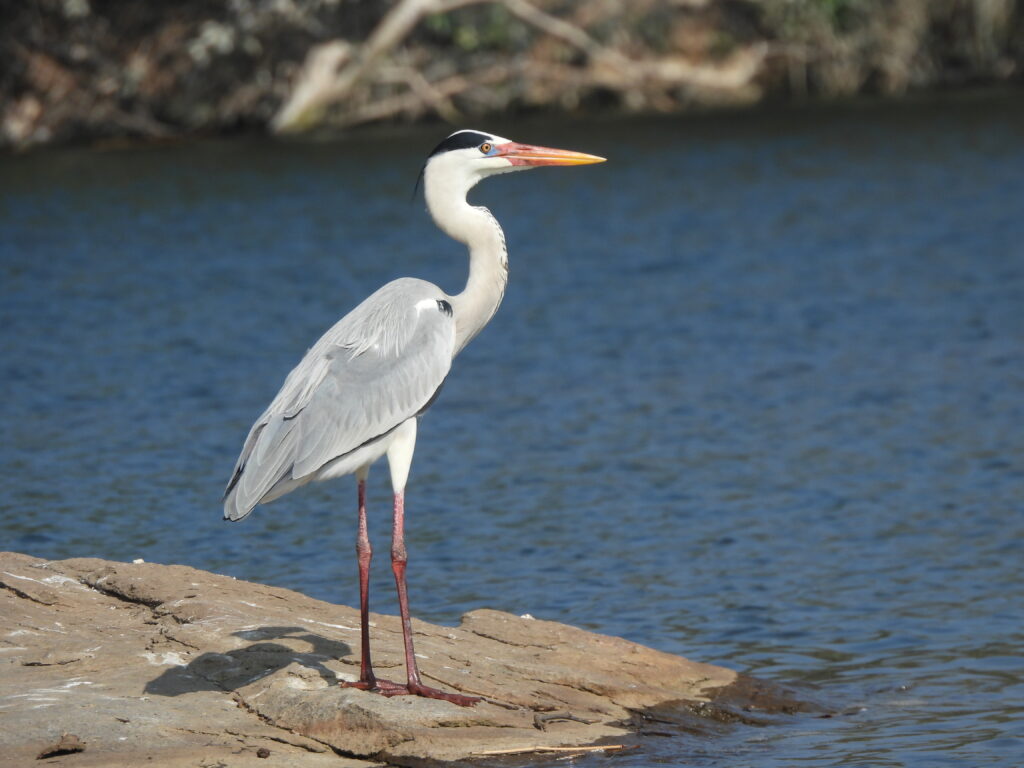The herons, egrets and bitterns (family Ardeidae) are a large family of birds belonging to the order Pelecaniformes. These medium to large water birds found in wetland habitats of all continents except Antarctica. They typically hunt for fish from twigs, reeds and shores with their long, retracting necks and spear-like bills. Herons are typically large and colored while egrets are all-white, both foraging in the water surface out in the open, although these two terms have no taxonomic meaning. Bitterns are skulking inhabitants of the reeds that usually communicate via strong vocalizations. Numerous members of the family nest in colonies on large trees while others are solitary breeders inside reedbeds.
The family comprises 68 extant species belonging to 18 genera. Genera Tigriornis (1 species) and Tigrisoma (3 species) are often known as tiger herons. Genera Cochlearius (1 species), Agamia (1 species) and Zebrilus (1 species) are distributed along the Neotropics. Genus Botaurus (13 species) includes the bitterns. Genera Gorsachius (2 species), Calherodius (1 species) and Oroanassa (1 species) form a group of elusive and rare night herons from the Old World. Genera Pilherodius (1 species) and Syrigma (1 species) are Neotropical. The genus Egretta (12 species) has a cosmopolitan distribution. Genera Nyctanassa (1 species) from the New World and Nycticorax (2 species) from the Old World comprise a clade of abundant night herons. Genus Butorides (4 species) is widespread in warm regions and genus Zonerodius (1 species) is endemic to New Guinea. Old World pond herons belong to genus Ardeola (6 species). The diverse genus Ardea (16 species) includes species found in all continents except Antarctica, two of which are threatened of extinction. At least 6 species, all formerly distributed in islands, have gone extinct in historical times.
Little bittern
Botaurus minutus
Breeds in large reedbeds across Europe and Subsaharan Africa, although European birds are mostly migratory and leave the old continent during winter, some migrating as far south as South Africa. Cryptic and elusive albeit quite vocal, as it is typical in its genus. This species is a common summer visitor and an increasing resident in reedbeds of wetlands in Alicante.
Black heron
Egretta ardesiaca
Found along a patchy distribution in wetland habitats of the Afrotropical realm. This dark-colored medium-sized heron is renowned to hunt for fish under the shadow of its wings, curled like an umbrella, a behavior known as canopy fishing. I have observed this species in Madagascar.
Pacific reef heron
Egretta sacra
Widespread in coastal habitats of mainland and islands of the eastern Indian Ocean and the western Pacific Ocean, from Japan and the Nicobars to the Polynesia and New Zealand. The species shows a mostly white morph and an all dark morph. I have observed this species in the coast of Singapore and Palawan in the Philippines.
Western reef heron
Egretta gularis
Found mostly in mangroves and other wet habitats of West Africa, the Persian Gulf, the Red Sea and the Arabian Sea. The species shows a white and a dark slaty morph, with birds showing intermediate plumages. I have seen this species in an urban harbour in Qatar, where the Western form schistacea occurs. Vagrant individuals rarely show up in Europe, such as a bird I have seen in Catalonia, likely belonging to the West African gularis form.
Little egret
Egretta garzetta
Resident in freshwater bodies and shores of Africa, Southern Europe and Asia to Australia, with some partially migratory populations. Some forms of the species have an uncommon slaty morph besides the widespread all-white plumage of the species. This species is abundant in wetlands and shores of Alicante all year round, only breeding locally. I have seen the dimorphic egret, form dimorpha, distinct and often regarded as a separate species, in Madagascar.
Black-crowned night-heron
Nycticorax nycticorax
Widespred in warm regions of all continents except Antarctica and Australasia, where it is replaced by the Nankeen night-heron. This species is a common summer visitor and an increasing resident in reedbeds of wetlands in Alicante, where it is most often seen and heard during and right after sunset. I have also seen good numbers in Madagascar and India.
Nankeen night-heron
Nycticorax caledonicus
Mostly found in mangroves and wetlands with tall trees in Australasia, with populations reaching the Philippines and north Borneo. Daytime encounters are usually of roosting birds as this species is almost entirely nocturnal. I have encountered this species in coastal Borneo.
Little heron
Butorides atricapilla
Found in tropical latitudes of the Old World, showing variations throughout its range from Subsaharan Africa to Japan and south to Australia, inhabiting freshwater and coastal, saltwater habitats alike. I have seen numbers of this species in Reunion, Mauritius and Madagascar (form rutenbergi), Borneo, Vietnam, Thailand and India (form javanica) and even some individuals in the harbour of Dubai (form brevipes).
Indian pond heron
Ardeola grayii
Extremely abundant in rice paddies and marshes of the Indian Subcontinent, with populations extending to the Maldives, Myanmar and even the Persian Gulf. Due to its habits, it is locally known as the paddybird. I have seen good numbers of this species in different moist habitats of south India.
Javan pond heron
Ardeola speciosa
Found in diverse wetland habitats of Southeast Asia and the Philippines to Java and the Lesser Sunda Islands. Breeding birds have a dark back, reddish breast and creamy brown head, but non-breeding plumage is indistinguishable from other co-occurring pond herons. I have encountered this species in Bangkok area in Thailand.
Squacco heron
Ardeola ralloides
Found in wet habitats of Africa, with migratory populations breeding in Southern Europe to Central Asia. Breeding birds have a neat orangish plumage. This species is a common summer visitor and a rare resident in wetlands in Alicante. I have also seen good numbers in Madagascar.
Malagasy pond heron
Ardeola idae
Occurs in mangroves and marshes of Madagascar and Aldabra, where it breeds and migrates to mainland Africa during the non-breeding period. Uniquely among pond herons, breeding birds have an all-white plumage. Scarce and endangered, with only few breeding colonies known worldwide. I have seen this species in wetlands of Madagascar.
Great egret
Ardea alba
Cosmopolitan heron found in all continents except Antarctica, with partially migratory populations found in cold areas of the Northern Hemisphere. The European alba form visits the wetlands of Alicante in moderate numbers, especially in winter. I have also seen good numbers of the African melanorhyncha form in Madagascar, and the Eastern modesta form in Borneo, Thailand and India.
Yellow-billed egret
Ardea brachyrhyncha
Medium-sized and yellow-billed white heron found in marshes of most of Subsaharan Africa. This species used to be lumped with the Indomalayan medium egret and the Australasian plumed egret. I have observed this species in Kenya.
Medium egret
Ardea intermedia
Partially migratory populations occupy wetlands from the Indian Subcontinent to Japan and Indonesia. Its name refers to its size compared to other co-occurring white herons and egrets. This is an abundant species in Southern Asia — I have seen good numbers in Borneo, the Philippines and India.
Western cattle egret
Ardea ibis
Found in varied habitats of Africa and locally in Western Europe and the Middle East, with a growing population expanding throughout the Americas over the last century. This species thrives close to human settlements, often foraging around cattle, as its name suggests. It is an abundant resident in wet cropland areas in Alicante. I have also seen good numbers in Madagascar and Kenya.
Eastern cattle egret
Ardea coromanda
Found in Eastern Asia from the Indian Subcontinent to the Philippines and the Lesser Sunda Islands, with migrating populations breeding north to Japan and Korea and wintering south to Australia. Formerly lumped with the closely related western cattle egret in the monotypic genus Bubulcus. Numerous species in Southern Asia, where I have seen good numbers in Borneo, the Philippines, Thailand and India.
Purple heron
Ardea purpurea
Resident in wetlands of Africa and Southern Asia, with migratory populations breeding in the warmer half of Europe and the Russian Far East. Unlike other herons in range, it breeds inside reedbeds and is rather retiring. It is a moderate summer visitor in the wetlands of Alicante. I have also observed this species in Madagascar (where the endemic form madagascariensis occurs), Borneo, Vietnam and India.
Black-headed heron
Ardea melanocephala
Resident bird and generally abundant in many habitats of the Afrotropical realm. It is not necessarily linked to water bodies, often foraging out in the open in savanna or other grassland habitats. I have observed this species in Kenya.
Goliath heron
Ardea goliath
Strictly found in water bodies, especially so for a heron, along Subsaharan Africa. It is the largest member of the family, with recorded height over 1.5 m, wingspan of 2.30 m and a bark call that can be heard from kilometers away. I have seen this species in Kenya.
Gray heron
Ardea cinerea
Abundant heron of ponds and marshes of most of the Old World, including urbanized areas. Populations breeding in colder regions migrate to warmer latitudes during winter. The nominate form is abundant in wetlands and shores of Alicante all year round, only breeding locally. It is the most regular and numerous member of the family in Helsinki. I have also observed this species in Madagascar, where the endemic form firasa occurs.

